
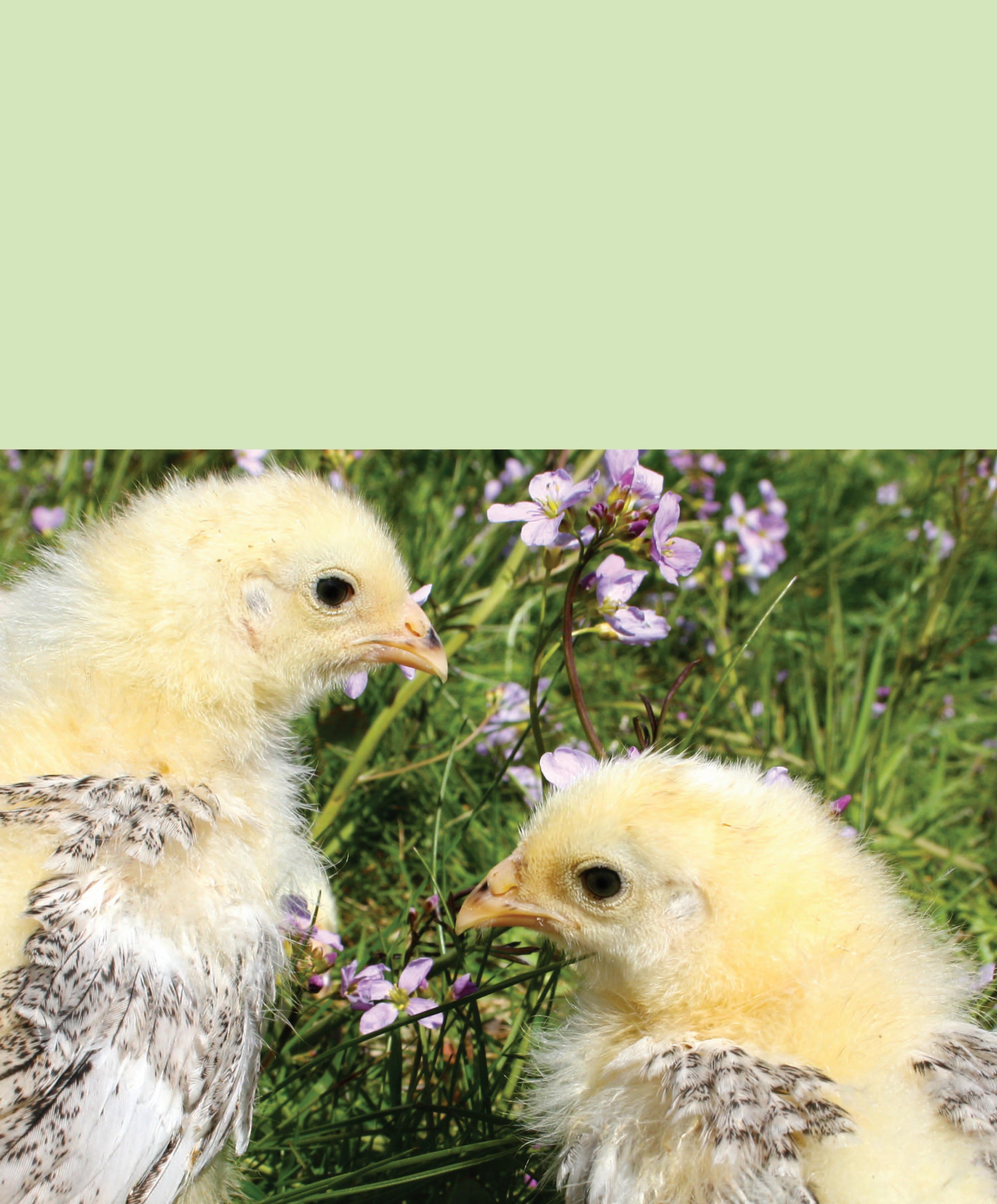





www.poultrytimes.com Your poultry industry news source since 1954 April 8, 2024 P OULTRY H EA LT H
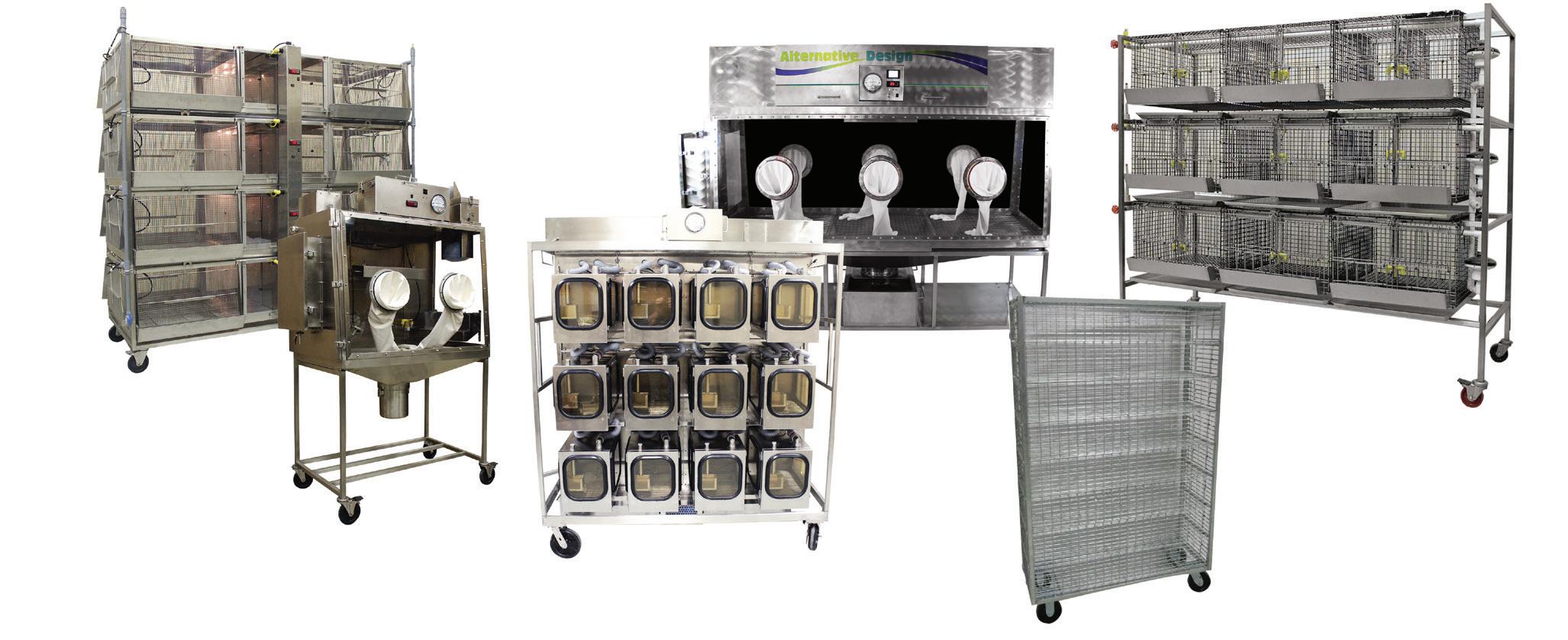
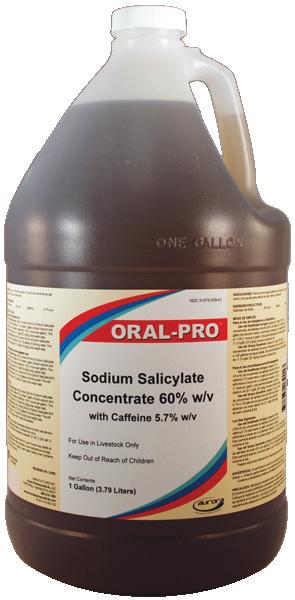






Designed to Keep Your Business Growing Coccidiosis and Stress Management Tools … CocciAid® (amprolium) 9.6% Oral Solution Coccidiostat Offers water solubility in hard water Offers stress relief from vaccination and processing Available in 1-gallon no-spill plastic jug transportation, vaccination and processing Offers water solubility in hard water Available in 1-gallon no-spill plastic jugs MANUFACTURED IN THE USA 1 Lees, P. and S.A. May 1992. Inflammation and anti-inflammatory drugs. Pages 843–863 in: Bovine Medicine. A.H. Andrews, R.W. Blowey, H. Boyd, and R.G. Eddy, ed. Oxford Blackwell Scientific Publications, Cambridge, MA. 2 Osol, A., R. Pratt, and A.R. Gennaro, 1973. The United States Dispensatory, 27th ed. J.B. Lippincott Co., Philadelphia, PA. Purchase by Contacting Your Local Animal Health Products Provider For more information visit us at: www.aurorapharmaceutical.com CocciAid and ORAL-PRO are Registered Trademarks of Aurora Pharmaceutical, Inc. ad000027 03/2024 Customers have come to appreciate the ease of poultry housing solution products, and the durable using PVC coated wire and stainless steel. Proven Products. Innovative Solutions. For 35 years, our company has built a reputation of quality products and custom innovative solutions to meet the changing industry. When innovation, quality, and service are hard to find, contact the original Alternative, backed by an industry-leading warranty program! Customers have come to appreciate the ease of poultry housing solution products, and the durable of quality the ever to find, durable construction that comes from info@altdesign.com 479.524.4343 www.altdesign.com/poultry Proven Innovative For products changing When contact industry-leading Avian Made Alternative and emphasis cages cages, for environment test Customers poultry using Proven Innovative For products changing When contact industry-leading Avian Made Alternative and emphasis cages cages, for environment test Customers poultry using


In the race against time, get a lead on protecting your flock from coccidiosis. The proven formula of VAXXILIVE™ COCCI 3 has strains that provide optimal protection, result in less oocyst production, and lead to earlier immunity.1-3 Experience reliable protection and unmatched support when you choose Boehringer Ingelheim.
POULTRY TIMES POULTRYTIMES.COM 4 References: 1-3. Data on file at Boehringer Ingelheim. Vaxxilive™ is a trademark of Boehringer Ingelheim Vetmedica GmbH, used under license. ©️2022 Boehringer Ingelheim Animal Health USA Inc., Duluth, GA. All Rights Reserved. US-POU-0074-2022A
GIVE
Learn more at poultryhealthusa.com
YOUR FLOCK A HEAD START.
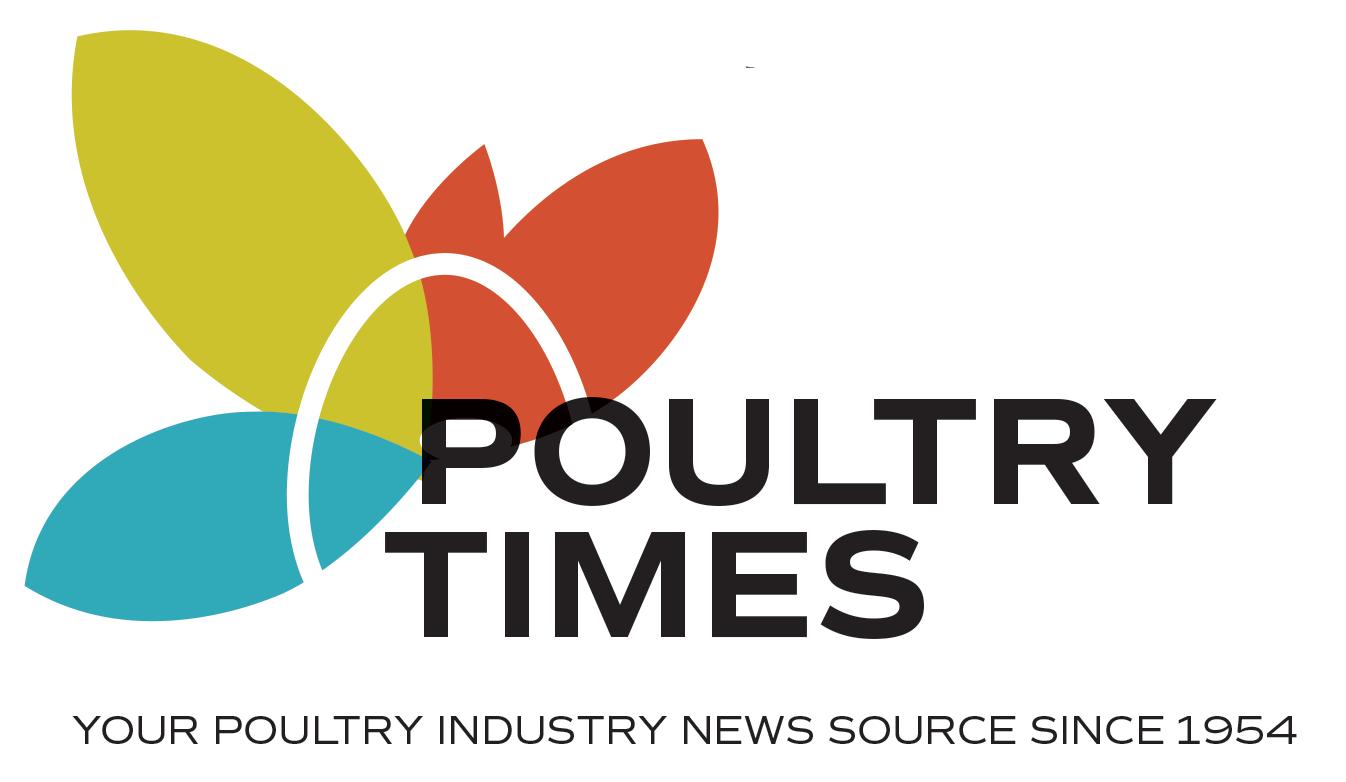

9
News
7 | U.S. egg industry continues trade mission efforts in South Korea
8 | TAMU: Feeding cattle after wildfires
Business Features
12 | Ag, environmental and conservation groups investing $2M in chicken BMPs
Calendar
APRIL
24 | National Turkey Federation names
Leslee Oden new president and CEO
29 | TAMU: Egg prices increase ahead of Easter
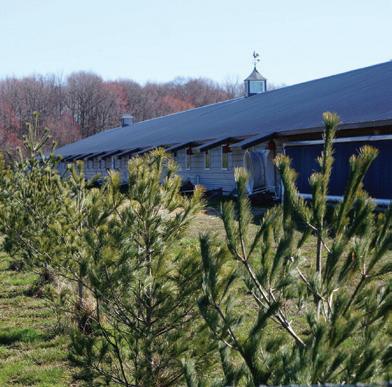
APR 9-11 — UGA HOT WEATHER POULTRY HOUSE MANAGEMENT WORKSHOP, Flinchum’s Phoenix, Athens, Ga. Contact: University of Georgia Department of Poultry Science, Ph: 706-5409111; www.poultryventilation. com/events.
APR 11 — AFIA/KSU-500, Fundamentals of Feed Manufacturing. Online course runs
through May 14, 2024. Contact: American Feed Industry Association, 2101 Wilson Blvd., Suite 810, Arlington, Va. 22201. Ph: 703-524-0810; www.afia.org.
APR 16-17 — ENVIRONMENT, LABOR & SAFETY CONFERENCE, Loews New Orleans Hotel, New Orleans, La. Contact: North American Meat Institute, 1150 Connecticut Ave. NW, Washington, D.C. 20036; Ph: 202-587-4200; www.meatinstitute.org.

POULTRY HEALTH




Viewpoints
“To prevent colonization by pathogenic organisms, beneficial non-pathogenic bacteria must be established in the gut to inhibit growth of undesirable microbes.”
—

26 | Auburn researcher aims to help prevent, control avian influenza




POULTRY TIMES POULTRYTIMES.COM 5 VOL. 71 | NO. 8 | APRIL 8, 2024
www.poultrytimes.com Your poultry industry news source since 1954 April 8 2024 POULTRY HEALTH IN THIS ISSUE On the cover
Denise Heard | 10
Connect with us Visit us at: POULTRYTIMES.COM 24/7 on the World Wide Web or scan the code to the right /poultrytimes @PoultryTimes /poultrytimesga

CORPORATE HEADQUARTERS
POULTRY TIMES
PO Box 1338
Gainesville, GA 30503
PH | 770-718-3443
FAX | 770-532-4894
POULTRY TIMES STAFF
CINDY WELLBORN
General Manager, Poultry Times/PoultryTimes.com 770-718-3443
cwellborn@poultrytimes.com
DAVID B. STRICKLAND
Editor, Poultry Times 770-718-3442
dstrickland@poultrytimes.com
ELIZABETH BOBENHAUSEN
Content Writer, Poultry Times 770-209-3335
ebobenhausen@poultrytimes.com
RACHEL DANFORD
Digital Manager, PoultryTimes.com
770-831-8631 rdanford@poultrytimes.com
STACY LOUIS
Sales Manager, Poultry Times/PoultryTimes.com 770-718-3445 slouis@poultrytimes.com
JANICE SISK
Sales & Administrative Assistant, Poultry Times/PoultryTimes.com 770-718-3439 jsisk@poultrytimes.com
KIM EWING
Circulation
770-718-3420
kimewing@poultrytimes.com
Index of Advertisers
Be sure to pay a visit to these esteemed sponsors of the Poultry Times, recognizing them as vital contributors to the industry who greatly appreciate your support.
Alternative Designs | 3,28 800-320-2459; www.altdesign.com
Aurora | 2 888-215-1256; www.aurorapharmaceutical.com
Boehringer Ingelheim | 4 678-450-6107; www.Boehringer-Ingelheim.com
Cargill/Provimi | 19 www.CargillAnimalNutrition.com/ Poultry Creekview | 24 717-445-4922; CVLITTERPRO@gmail.com
Eagan | 15 870-878-6805; www.eaganmfg.com
FPM | 20 402-729-2264; www.fpmne.com
Farmer Boy | 18 800-845-3374; FarmerBoyAg.com
Gas- fired | 20 800-849-7311
www.spaceray.com
Impact Poultry Products | 24 800-448-4723
www.impactpoultryproducts.com
Kelley MFG. | 26
800-449-5449
www.kelleymfg.com
L.B. White | 21 608-783-5691 www.lbwhite.com
Motomco | 14 800-237-6843 www.motomco.com
National Incinerator | 27 205-589-6720 www.nationalincinerator.com
Neogen | 32
800-234-5333; www.neogen.com
Nutech Bio | 16,17 315-251-4324
info@nutechbio.com
Precision Lighting | 1,22,31 800-737-1837
Overdrive | 23 www.aglights.com
Walinga USA | 25 800-466-1197; www.walinga.com
Weigh Tech | 26, 800-457-3720; www.weightechinc.com
Publication Disclaimer
Poultry Times (USPS 217480) ISSN 0885-3371 is published biweekly, 345 Green Street, N.W., Gainesville, GA 30501. Telephone 770-536-2476; Fax 770532-4894. Postage paid at Gainesville, Georgia 30501. Poultry Times assumes responsibility for error in first run of an in-house designed ad only. Advertisers have ten (10) days from publication date to dispute such an advertisement. After ten (10) days, ad will be deemed correct and advertiser will be
charged accordingly. Proofs approved by advertiser will always be regarded as correct.
Subscriptions: Surface mail in U.S., $25.00 for one year, $45 for two years and $65 for three years. Business or occupation information must accompany each subscription order.
Change of Address: Postmaster, report change of address to Poultry Times, P.O. Box 1338, Gainesville, GA 30503.
The opinions expressed in this publication by authors other than Poultry Times staff are those of the respective author and do not necessarily reflect the opinions of Poultry Times.
Advertisement content is the sole responsibility of the advertiser. Poultry Times assumes no liability for any statements, claims or assertions appearing in any advertisement.
Companion Poultry Publications: A Guide to Poultry Associations; Poultry Resource Guide.
© 2024 Metro Market Media Gainesville, Georgia 30503
POULTRY TIMES POULTRYTIMES.COM 6
U.S. egg industry continues trade mission efforts in South Korea
COVER STORY
DAVID B. STRICKLAND Poultry Times Editor dstrickland@ poultrytimes.com
WASHINGTON — Egg industry officials, along with USDA and dozens of agribusinesses, farm organizations and state departments of agriculture representatives made what is a second trade mission to South Korea in six months, during the week of March 25-28.
The mission is being led by USDA Trade and Foreign Agricultural Affairs Under Secretary Alexis M. Taylor. American Egg Board President and CEO Emily Metz, and Greg Hinton, vice president of sales at Rose Acre Farms, Seymour, Ind., will be representing the U.S. egg industry.
AEB notes that South Korea is a key strategic target market for the U.S. and is the number five top export destination for U.S. egg products.
“Returning to South Korea with the USDA after our very successful egg industry trade mission last November reaffirms our commitment to targeting significant growth opportunities in this top egg-buying export market,” Metz said. “Our objective is to help our producers diversify their sales portfolios and increase access to safe, high-quality U.S. eggs and egg products as part of a larger strategic goal to double U.S egg exports in the next five years.”
AEB adds that it is working in partnership with the USA Poultry & Egg Export Council and United Egg Producers to build

the U.S. egg industry’s trade capacity and increase the amount of egg exports worldwide.
During this trade mission, the participants will be able to take part in business-to-business meetings, see South Korean food trends, see how U.S. products are being used in the South Korean marketplace, and receive market briefings from USDA Foreign Agricultural Service trade experts.
AEB notes that data is showing great untapped growth opportunities for shell eggs and products, adding that, on average, egg exports in recent decades have amounted to approximately 3.8 percent of total table egg production annually.
“America’s egg farmers have almost literally kept their eggs all in one basket — the U.S. domestic market,” Metz said.
“Through this determined focus on growing exports, the American Egg Board seeks to roughly double the average annual U.S. egg exports to 7 percent of total table egg production within the next five years.
“Our focus on trade missions is an essential step in a larger global egg strategy that I believe is fundamental to the prosperity and stability of our U.S. egg producers and crucial to the industry’s future.”
This trade mission marked the beginning of a remarkably busy week for AEB and the egg industry, leading up to the annual White House Easter Egg Roll on Monday, April 1.
USDA noted that the U.S. and South Korea marked the 10th anniversary of the United States-Korea Free Trade Agreement in 2022, which supports
a bilateral trade relationship between the two nations. With South Korea being the fifth largest export market for U.S. agriculture products, with an export value of $8 billion.
“South Korean consumers appreciate the quality and reliability of U.S. food and agricultural products,” Under Secretary Taylor said. “I’m excited to introduce the U.S. companies and their diverse lineup of products to this important market. This week provides a great opportunity to develop the partnerships and foster the collaboration that are critical to facilitating the long-term relationships that will form the basis for expanding U.S.-South Korea trade. I’m confident the engagements planned here in Seoul will deliver mutually beneficial results.”
POULTRY TIMES POULTRYTIMES.COM 7
PT
TAMU: Feeding cattle after wildfires
BY KAY LEDBETTER Texas A&M University
COLLEGE STATION, Texas —
Truckloads of hay rolled in from across Texas and beyond, bringing much-needed feed for cattle in the wake of more than 1.2 million acres of ranchland and pastures blackened by wildfires across the Texas Panhandle.
According to USDA numbers, in most years, almost 100,000 head of cattle graze pastureland in Hemphill, Roberts, Gray, Hutchinson, Oldham, Potter and Carson counties. The wildfires burned as much as 50 percent of these acres, with a greater percentage in some counties than others, and grassland won’t be available for grazing this season.
Ranchers couldn’t make it without this much-needed donated hay. However, the livestock’s nutrition care doesn’t end there, according to two Texas A&M AgriLife Extension Service beef cattle specialists.
• Daily feeding Dr. Ron Gill, a professor in the Texas A&M College of Agriculture and Life Sciences Department of Animal Science, Bryan-College Station, said cows will consume about 2 to 2.6 percent of their body weight in dry hay depending on quality, so it is important to provide enough for their full daily intake.
“Depending on the number of cattle on hay, it may be necessary to put out numerous hay rings so cows have adequate access to hay, or possibly unrolling hay as a better option,” Gill said. “When feeding cows, it would be best to put out one ring per 10-15 cows. For these stressed cattle, you don’t want the boss cows keeping the weaker cattle from getting access to hay.”
Some other considerations:
• Account for waste when calculating the amount of hay to feed daily. Depending on how the hay is fed to the cows, there can be as much as 50 percent wastage.
“Expect roughly 10 to 15 percent of the hay that is fed to be wasted in the current environmental conditions,” said Dr. Jason Smith, an associate professor in the TAMU Department of Animal Science, Amarillo. “That number may be substantially greater if much-
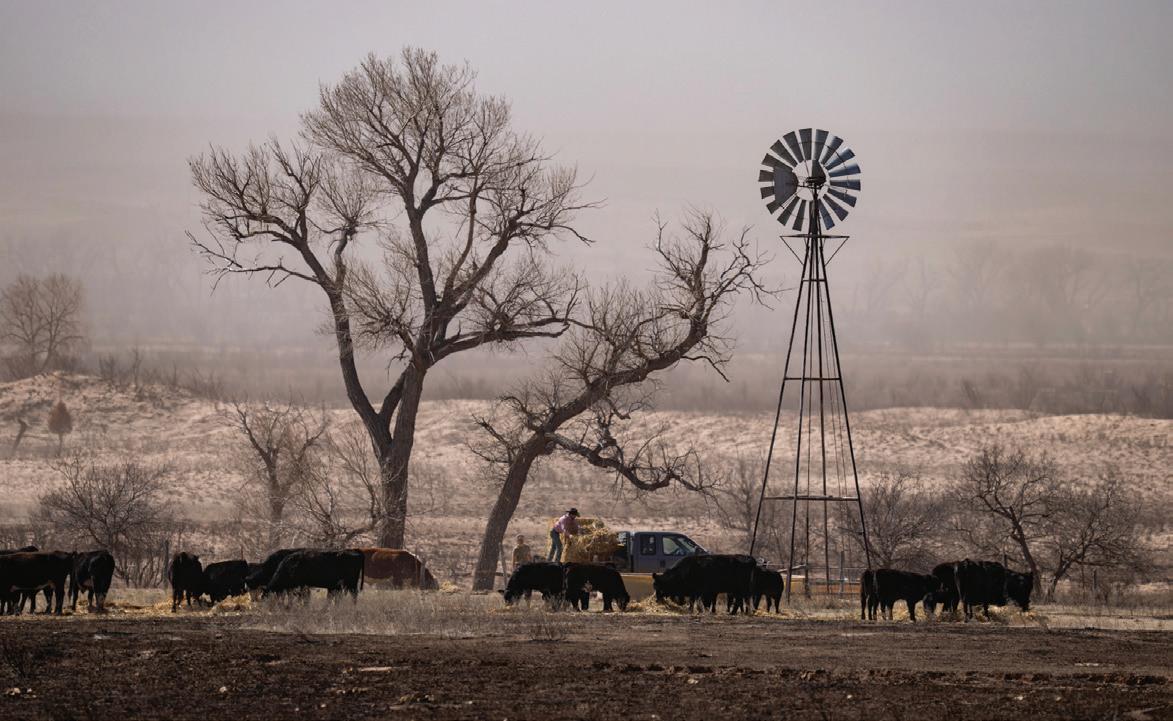
Ranchers are utilizing the much-needed donated hay to keep their cattle fed after wildfires blackened the pastures that cattle would typically be grazing as spring arrives.
needed rainfall brings muddy conditions.”
If available, hay rings or “roundbale feeders” will likely cut waste in half. If cattle can be fed their daily limit of hay, waste can be reduced. Other strategies to minimize hay waste are to feed hay daily or every other day and only feed additional hay when that hay is cleaned up.
A better alternative might be unrolling their daily need every day; however, this may not be feasible with all the aspects of recovery going on. Feeding more hay than will be consumed in one to two days will result in greater waste.
• Consider the class of cattle consuming hay. Young growing cattle, pregnant heifers approaching calving, and first-calf heifers and cows that are nursing calves are among the classes with the highest nutrient demands. These are followed by mature cows in late pregnancy and then by cows in early pregnancy, mature bulls, and dry cows.
It may be possible to match better-quality hay to the cattle with higher demands and lower-quality hay to those with lower demands; however, there are likely some of each in many herds right now. Depending on the hay and the cattle, supplemental protein and energy may be required. While hay analysis is usually unavailable on donated hay, look at the stem-to-leaf ratio and color to estimate relative quality.
• Cows being held to market
the specific situation. Low protein, “commodity blend” type feeds and 20% cubes may be good options to help sustain the growth of growing cattle fed medium to high-quality hay.
Higher-protein cubes or “cake” — from something like a 28 percent distiller’s grains or “DDGS” cube to a 38 percent cottonseed meal-based cube — will be better suited to help fill the protein and energy voids left by relatively lowquality hay.
“Be mindful to not over supplement or overfeed cattle that are overly hungry,” Smith said. “They will overeat if they are overfed and could bloat or experience acidosis as a consequence.”
soon may be managed differently than cows remaining in the herd for the longer term.
• Productivity of thin cows with a body condition score of 4 or less going into the calving season will be impacted if their nutrient deficit is not addressed. These cows will struggle to raise their calves this year and are less likely to breed during the upcoming breeding season.
Hay type matters
The nutrient content of hay will depend upon several factors, such as its type and stage of maturity when it was harvested, Smith said.
“In many situations, the energy and protein content of the hay will be lower than that required by the cattle unless they are mid-gestation dry cows,” Smith said. “Supplementing to correct the nutrient deficiencies will be necessary in most cases, especially considering that most herds here either just began calving or will in the near future.”
• Different supplements for different situations
As donations come in, there may be a wide variety of supplemental feedstuffs. Hay quality, stage and level of production, and size are the main factors influencing protein and energy supplementation needs.
Since hay quality may not be known in many situations, some general rules of thumb may help determine the best supplement for
For cattle not being supplemented before the fire, begin by introducing a small amount, such as 0.25 to 0.5 percent of body weight, or roughly a few pounds of supplement per head per day for a mature 1,200-pound cow. Then gradually increase that daily amount every second or third day until the desired level of supplement is achieved.
Alfalfa hay may also be a good protein and energy supplement for many situations, but avoid feeding it free-choice when possible, particularly when cattle are hungry.
Smith encouraged producers not to overlook the importance of a complete mineral and vitamin supplement right now.
“Hay alone or hay and cake will not meet the mineral and vitamin requirements of cattle,” he said. “Minerals and vitamins provided through the supplement will help fuel the animal’s immune system, repair damaged tissues, and make it more resilient to stress. There are a lot of affected cattle that could benefit from those things right now.”
• Test hay when possible
Gill and Smith said it would be prudent to test hay when possible, as some hay sources may contain prussic acid or nitrates. The risk of this is low in most of the perennial grasses and Conservation Reserve Program, CRP, type hay, and greatest in warm-season annuals like sorghum, sudangrass and sorghum x sudangrass. Hay can be tested to measure the level of nitrates or prussic acid and determine if levels in the hay are of concern.
POULTRY TIMES POULTRYTIMES.COM 8
bales ing to ply. hand collected probe sentative mended lot period. the In of to risk” reduce suming prussic energy minimize sue is Smith to are
Texas A&M AgriLife photo/Sam Craft
ruary, discovered avian of harm entific “This for pathogenic has the that tinents.” found skua ered the shown with enza
Scientists fear for penguin populations as Antarctica sees first case of bird flu
BY ELIZABETH BOBENHAUSEN Poultry Times staff ebobenhausen@ poultrytimes.com
GAINESVILLE, Ga. — In February, Reuters reported scientists discovered a fatal case of a type of avian influenza on the continent of Antarctica that could cause harm to the penguin populations.
Spain’s Higher Council for Scientific Investigation (CSIC) said, “This discovery demonstrates for the first time that the highly pathogenic avian influenza virus has reached Antarctica despite the distance and natural barriers that separate it from other continents.”
CSIC noted that the virus was found through samples of dead skua sea birds that were discovered by Argentine scientists near the scientific station of Primavera.
“Analysis has conclusively shown that the birds were infected with the H5 subtype of avian influenza and at least one of the dead
When testing, sample several bales for the test rather than relying on a sample from one or two to represent the entire hay supply. Avoid grabbing samples by hand when possible. Core samples collected using a forage analysis probe will aid in collecting a representative sample. Testing is recommended for situations where the lot of hay will last for a substantial period.
Testing may not be possible if the hay is fed within a day or two. In that situation, limit the amount of the suspect hay provided daily to the cattle and feed other “low risk” hay with the suspect hay to reduce the risk of the cattle consuming a toxic level of nitrates or prussic acid. Feeding a protein and energy supplement will also help minimize the risk of a toxicity issue through dilution.
• Young calves may need additional help
Since the spring calving season is just kicking off in the region, Smith said to pay close attention to newborn calves and calves that are born over the coming days and

birds contained the highly pathogenic avian influenza virus,” CSIC noted in the report.
Reuters added that Fabiola Leon from the Pontifical Catholic University of Chile participated in an expedition from late 2023 to early 2024. Her task was to observe the bird flu in Antarctica.
“We are talking about a very worrying risk,” Leon said in the report. “There are species in dan-
weeks. Cows with burned udders may not allow calves to nurse.
He said milk replacer is the only viable option for those calves unless nurse cows that will accept a calf are available. When possible, avoid plant protein-based milk replacers to ensure calves receive the nutrients they need in a form they can digest and absorb.
Smith also encourages producers to pay close attention to calves born soon after the fire.
“If the cow won’t let the calf nurse, and the calf doesn’t receive colostrum, the calf’s likelihood of survival is incredibly low,” he said. “It is critical that the calf receives colostrum within the first few hours of life. Waiting 24 to 48 hours after birth to get colostrum into a newborn calf is too long.”
Administer colostrum replacer or previously frozen colostrum that has been thawed using warm water to calves that can’t nurse as soon as possible to give them a fighting chance. If using a commercial product, Smith also encouraged producers to read the label and ensure that the product is intended
ger of extinction, such as emperor penguins and other birds.”
The organizer of the expedition, the Chilean Antarctic Institute (INACH), said they found more cases of bird flu. Early in March, the organization stated they hit a “landmark” due to the fact the virus had spread to penguins.
As the strain of bird flu wreaks havoc in Antarctica, another strain is sending alarms bells to South
to replace and not just supplement colostrum, and to also ensure that the calf receives the amount necessary to effectively replace colostrum that would have normally been provided by the calf’s dam.
• Feeding for months
Typically, most livestock would be turned out onto pastures greening up with recent moisture, but many ranchers will find themselves feeding cattle throughout the summer, as pastures typically do not completely recover for as long as 12-18 months.
If resources are available to feed until range recovery occurs, it would be prudent to keep cattle on hay or alternative pasture for an extended time, Gill said. While cattle recovery is critical it is just as critical to consider range recovery following these intense wildfires.
As producers look beyond the short-term situation of just getting daily feed in front of the cattle, wheat pasture may be an alternative, but Gill recommended using caution when turning hungry cattle out on wheat.
Grass tetany and bloat are real
American countries according to Reuters. H5N1 was first seen in South America in 2022.
After interviewing eight scientists, they said the threat of H5N1 spreading to humans is becoming greater. The virus used to be found in only in bird species, however, the strain has affected mammals in Chile and Peru.
The virus has killed dolphins, approximately 50,000 seals and sea lions and 500,000 birds. Mammal to mammal transmission can only be tested with live animals so it is unclear how the virus is being transmitted.
Richard Webby, a virologist at St. Jude’s Children’s Research Hospital in Memphis, Tenn., said, “It’s almost certainly happened. It’s pretty hard to explain some of these large infections and die off without having mammal-tomammal spread.”
The scientists interviewed stated that the virus has shown up in migrating birds and could impact places other than South America.
concerns this time of year. Make sure cattle are on a mineral supplement to help augment these risks and that they are full of hay before being placed on wheat pasture. Smith said feeding a supplement that contains an ionophore, such as monensin, or another bloat preventative, such as poloxalene, will also help to minimize the bloat risk.
Gill also said feeding a high-energy supplement such as corn or a corn-based mix can alleviate some risk and increase weight gain in cows and growing cattle.
More preparedness and recovery information may be found on the Disaster Assessment and Recovery website. Safety tips and wildfire resources are also available on the Texas Ready website (https:// texasready.gov/be-informed/ natural-disasters/wildfires.html) and the Texas A&M Forest Service website at https://tfsweb.tamu. edu/default.aspx.
Kay Ledbetter is communications coordinator for Texas A&M AgriLife.
POULTRY TIMES POULTRYTIMES.COM 9---
PT
VIEWPOINT

POULTRY TIMES
Evaluating treatments to prevent hatchery bacteria colonization
COMMENTARY BY
DENISE HEARD
U.S. Poultry & Egg Association
Dr. Denise Heard is director of research programs with the U.S. Poultry & Egg Association based in Tucker, Ga. She can be reached by e-mail at dheard@uspoultry.org.

TUCKER, Ga. — To ensure proper development and maturation of the gut before exposure to pathogenic microbes, establishment of a beneficial microbial niche during the neonatal chick phase is imperative. Horizontal transmission of microbes during hatch is inevitable due to the holding capacity of commercial hatch cabinets.
Eggshells may become contaminated post-lay or during the incubation or hatching phase. Although the cuticle layer on the eggshell serves as a protective barrier, fluctuation in temperature and pressure may accelerate penetration by potentially pathogenic organisms.
If infected eggs are not removed at transfer, the non-viable embryonated eggs could rupture during late embryogenesis resulting in contamination of the entire hatch cabinet. As the chicks begin to hatch, any microbes that had penetrated the eggshell and effectively replicated within the developing the embryo during incubation will be transmitted to the noninfected chicks in the hatch cabinet.
Horizontal transmission of opportunistic bacterial and fungal pathogens during hatch can have detrimental effects on early chick performance, particularly as initial colonizers.
To prevent colonization by pathogenic organisms, beneficial nonpathogenic bacteria must be established in the gut to inhibit growth of undesirable microbes. Although formaldehyde fumigation does control total environmental microbial counts, this treatment does not differentiate between beneficial or pathogenic microbes, still providing opportunity for pathogenic bacteria to colonize the gut.
There are no published laboratory challenge models adequate for testing products to control the microbial bloom in the hatch cabinet and pro-
“To prevent colonization by pathogenic organisms, beneficial non-pathogenic bacteria must be established in the gut to inhibit growth of undesirable microbes.”
mote colonization by beneficial microbes in neonatal chicks. Without an appropriate challenge model, it would be impossible to capture how a specific product will compare to formaldehyde fumigation without conducting experiments in commercial hatch cabinets.
Thus, researchers at the University of Arkansas developed a model containing multiple hatchery-associated pathogens to simulate the environmental contamination that occurs in commercial hatch cabinets during the hatching phase to evaluate formaldehyde fumigation alternatives, such as probiotics, and the effects on neonatal pioneer colonization.
The three main objectives of this
POULTRY TIMES POULTRYTIMES.COM 10
POULTRY TIMES
research were (1) Development of a multi-pathogen hatcher “bloom” challenge model using multi-species field samples collected from commercial hatchers, (2) Evaluate the effects of a spray-applied probiotic as an alternative to formaldehyde fumigation, utilizing the newly developed multi-pathogen challenge model, and (3) In ovo application of Bifidobacterium spp. and lactic acid bacteria to prevent colonization by pathogenic microbes during hatch, utilizing the newly developed multi-pathogen challenge model.
In Objective 1 experiments, application of pathogen mix (PM) challenge at 19 days of embryogenesis (DOE19) increased the microbial load in the hatching environment and gramnegative bacteria recovery from the gastrointestinal tract at day of hatch. Additionally, formaldehyde fumigation effectively controlled the microbial bloom in the hatch cabinet which was reflected by reduced enteric colonization and environmental contamination. The PM challenge model was used to evaluate alternatives to formaldehyde fumigation in objective 2.
In Objective 2, spray-application of Bacillus amyloliqufaciens solid state fermentation products into the hatch cabinet altered the composition of the microbial bloom and shifted enteric colonization at hatch but no differences in performance were observed. Further, in ovo administration of select combinations of lactic acid bacteria and/or bifidobacteria into the amnion at DOE18 reduced enteric colonization by gram-negative bacteria and Enterococcus spp. and positively impacted 14-day performance in broiler chickens.
Overall, this PM challenge model can be used by investigators to evaluate alternatives to formaldehyde fumigation in a laboratory setting prior to evaluation on a commercial scale. Additionally, these results suggest that beneficial microorganisms applied during late embryogenesis either into the hatch cabinet environment or by in ovo injection into the amnion can promote colonization by beneficial microorganisms and may im -

prove performance.
However, a multifaceted approach that exposes chicks to beneficial microorganisms prior to and during hatch will likely be necessary as a long-term solution to replace formaldehyde fumigation, and the PM model can be employed to validate commercially applicable approaches of interest moving forward.
Additional analyses are underway to better understand how formaldehyde fumigation or probiotic treatments affect the enteric microbiome of broiler chickens at hatch and within the first two weeks of life post-hatch.
POULTRY TIMES POULTRYTIMES.COM 11
----

BUSINESS
Ag, environmental and conservation groups investing $2M in chicken BMPs
GEORGETOWN, Del. — The Delmarva Chicken Association, the Alliance for the Chesapeake Bay, and the Nanticoke Watershed Alliance are partnering with chicken farmers to invest $2 million in cost-share programs to accelerate the adoption of chicken farming best management practices in Maryland, Delaware and Virginia’s Chesapeake Bay watersheds and improve riparian buffers, precision nutrient management, conservation drainage and litter management.
The three-year effort, which began accepting chicken farmers’ applications for cost-share support this spring, is backed by a $997,327 grant from the National Fish & Wildlife Foundation through NFWF’s Chesapeake Innovative Nutrient and Sediment Reduction Grants Program, a partnership between NFWF and the Environmental Protection Agency. Delmarva Chicken Association, the state of Maryland, the Alliance for the Chesapeake Bay and the Nanticoke Watershed Alliance are contributing a combined $1 million in matching funds to the initiative, and DCA is working with the Alliance for the Chesapeake Bay and the Nanticoke Watershed Alliance to implement the conservation measures, farm by farm.
The goal for each partner in the initiative is to improve the sustainability of the chicken community while continuing to improve water quality in the Chesapeake Bay.
“Since the 1980s, farmers have increased food production to meet growing demand while meaningfully reducing agriculture’s yearly nitrogen and phosphorus contributions to the Bay, contributing to its improved health today,” said Holly Porter, DCA’s executive director. “Innovative, collaborative efforts like this one between the chicken community, environmental groups, and funding partners provide an opportunity to realize even more agricultural nutrient reductions, benefiting everyone in the watershed.”
Farmers who participate in this cost-share program can be eligible for up to 100 percent cost-share on conservation initiatives. The installed practices can include:
• Trees around the perimeter of farms to provide a visual buffer from neighbors and roads, reduce noise, dust and odor, absorb soil nutrients, and provide shade.
• Large warm-season grasses near tunnel fans that can act like an outdoor air filter,
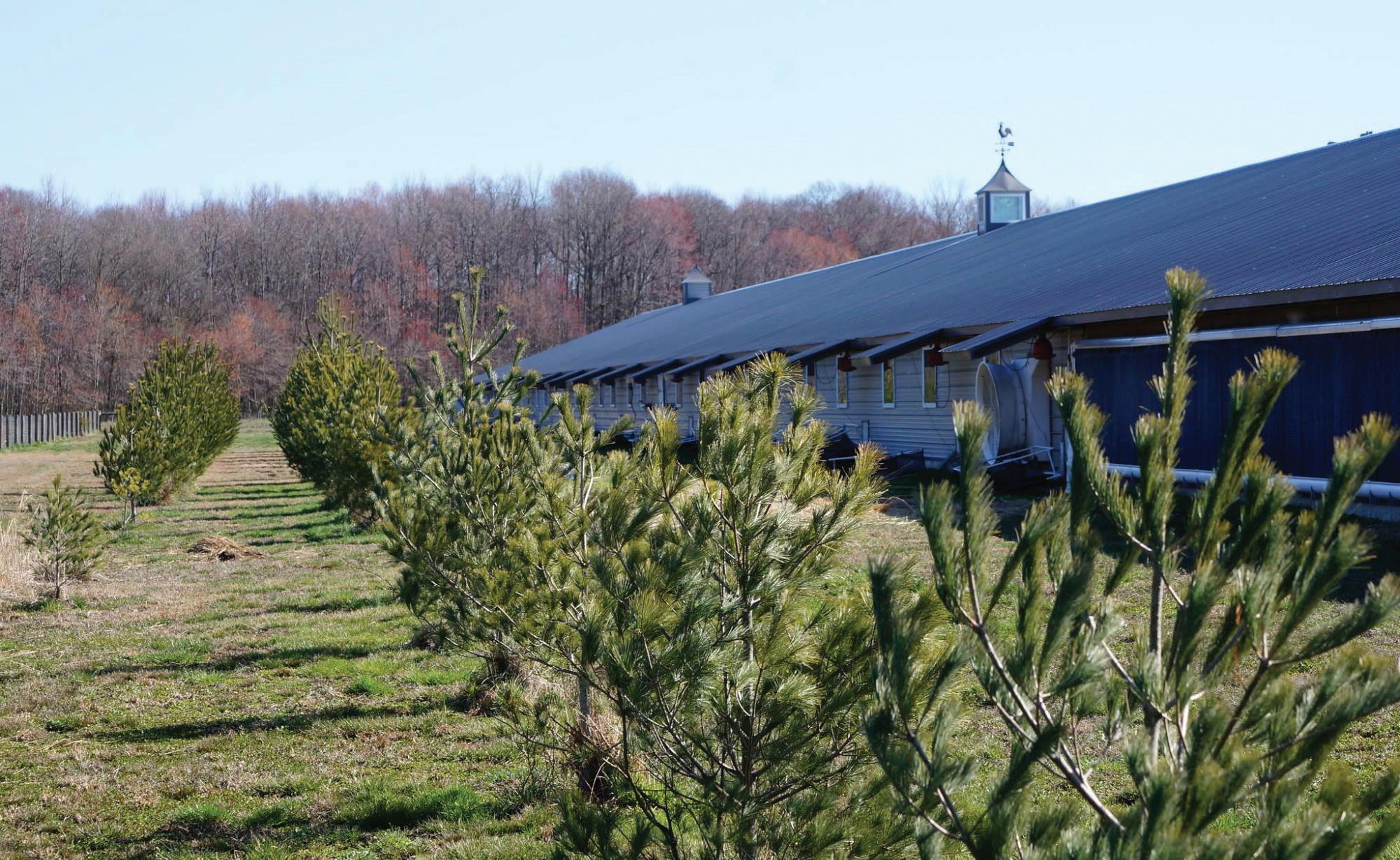
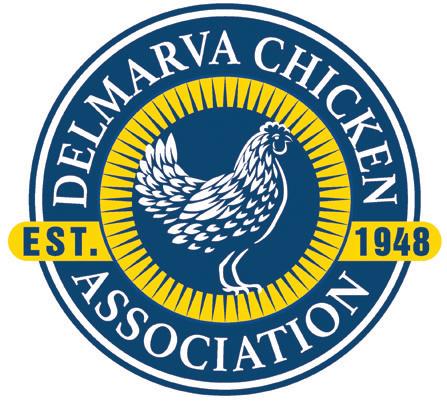
capturing dust and feathers and absorbing ammonia.
• Pollinator plots that can be planted in the swales between houses, around retention ponds, or in open areas that normally are mowed, reducing flooding and capturing soil nutrients in their roots.
• Additional farm-specific conservation practices.
“The Alliance for the Chesapeake Bay is proud to partner with the Delmarva Chicken Association and the Nanticoke Watershed Alliance on this initiative,” said Kate Fritz, CEO of Alliance for the Chesapeake Bay. “This effort builds upon the Alliance’s industry-led model of advancing conservation through cross-sector partnerships. By uniting the entire poultry supply chain to install conservation practices, we can work together to deliver positive environmental benefits, support farmers in achieving their conservation goals, and improve the efficiency and resiliency of our treasured Delmarva farms.”
“The partnership that has been forged between Nanticoke Watershed Alliance (NWA)
and Delmarva Chicken Association is a testimony to each organization’s commitment to preserving the environment while supporting our local economy,” said Lisa Wool, executive director of Nanticoke Watershed Alliance. “Through direct collaborative work with the farmers, we strive to have the industry thrive while protecting one of the last wild rivers, the Nanticoke. On-the-farm initiatives that keep our waterways clean on our environmentally sensitive peninsula are good for all inhabitants of the region and beyond. NWA is privileged to be a part of this and to facilitate these impactful efforts.”
DCA is also working with Delaware chicken growers to administer a $192,000 grant from the state of Delaware, matched with $203,000 of DCA funds, to operate a cost-share program funding installation of two kinds of vegetative environmental buffers on Delaware broiler farms. The program covers 90 percent of eligible costs for technical assistance, installation, and reporting.
DCA is accepting applications for participation by farmers, as well as applications from qualified landscapers to implement practices. To learn more about the cost-share programs or to contact DCA about enrolling a farm in the program, visit dcachicken.com/green, call DCA at 302-856-9037 or email warren@ dcachicken.com.
POULTRY TIMES POULTRYTIMES.COM 12
POULTRY TIMES POULTRY TIMES
CoBank: expansion soybean processing capacity overbuild bean production rising adoption CoBank has carbon tional is in growing oil, ramping pacity, crease three benefitted profit margins ate increase capacity competition. have to alternative feedstocks vegetable used weakness is CoBank’s multiple have well-prepared evitable However, bean with cessing the plants with profitability of said and Bank. at interest breakeven

CoBank: Rapid expansion of soybean processing capacity risks overbuild
DENVER — Demand for soybean oil as a feedstock in the production of renewable diesel is rising as the U.S. aims to increase adoption of cleaner burning fuels, CoBank notes. Renewable diesel has emerged as the preferred low carbon replacement for traditional diesel, and U.S. production is projected to increase sharply in the years ahead. To meet the growing demand for soybean oil, U.S. soybean processors are ramping up their production capacity, which is expected to increase by 23 percent over the next three years.
While soybean processors have benefitted from record-high profit margins in recent years, margins are expected to moderate as the market adjusts to the increase in domestic soy crush capacity and growing global competition. Soybean oil prices have come under pressure due to increasing competition from alternative renewable diesel feedstocks including imported vegetable oils, beef tallow and used cooking oil. And persistent weakness in soybean meal prices is likely as surplus grows.
According to a new report from CoBank’s Knowledge Exchange, multiple years of record margins have left U.S. soybean processors well-prepared to weather the inevitable downturn in margins. However, overbuilding U.S. soybean crush capacity, combined with sustained levels of low processing margins could threaten the viability of new, high-cost plants in the long term.
“Legacy processing plants with low debt levels will still find profitability in an environment of sharply lower crush margins,” said Tanner Ehmke, lead grain and oilseed economist for CoBank. “But new crush plants built at substantially higher costs and interest rates will have higher breakeven costs. And destina-
tion plants located outside of soybean-growing regions are at greater financial risk due to increased reliance on transportation to acquire soybeans.”
Rising demand for soybean oil for use in renewable diesel will support soybean oil prices. But competition from imported vegetable oils like canola and palm is increasing. Soybean oil remains the most widely used feedstock for biobased diesel production and accounts for roughly 35 percent of monthly feedstock usage. However, that percentage has fallen from 50 percent a year ago as usage of competing oils, fats and greases increases. Beef tallow has climbed to more than 20 percent of total feedstuff usage, while yellow grease and used cooking oil account for 20 percent.
The expansion of U.S. soybean processing capacity will lead to growing supplies of soybean meal, which could also pressure processor margins. End users of soybean meal in the U.S., chiefly swine and poultry producers, hope to benefit from an abundance of supplies as production climbs. But for soybean processors, the question is whether domestic livestock supplies will be ample enough to absorb the additional soybean meal.
Plentiful feed inputs and steady demand has historically encouraged animal protein production to expand in the U.S. More recently, higher input costs and uncertainty about consumer demand trends has muted expectations for growth. U.S. animal protein production is flattening and still not back to 2019 levels.
“Swine and poultry producers are the top feeders of soybean meal, but the ratios are relatively small and somewhat inflexible,” said Brian Earnest, lead animal protein economist for CoBank. “Given their better long-term growth outlook relative to other sectors, we expect broiler integrators will be best positioned to leverage growing soybean meal supplies. But the opportunity is limited, which means export markets will be increasingly important.”
U.S. soybean meal exports grew in 2023 following the historic drought that reduced Argentina’s soybean crop, CoBank added. Barring similar crop failures in South America, competition for soybean meal export market share will intensify in the years ahead. That
means the U.S. will likely need to compete on price in key markets like Southeast Asia.

Illinois Soybean Association launches new Soy Innovation Center
CHICAGO — The Illinois Soybean Association announces the opening of its Soy Innovation Center aimed to support and catalyze the State of Illinois’ goal to be a national leader in sustainable technology and innovation. The launch of ISA’s new Soy Innovation Center will enhance the state’s green reputation and spearhead the commercialization and expansion of new and existing sustainable, soy-based products as the globe transitions to a low-carbon economy.
“With world-class research facilities, robust financial organizations, well-established manufacturing facilities and a highly trained workforce, Illinois is at the forefront of sustainable agricultural innovations,” said Todd Main, director of market development for ISA. “This first-ofits-kind Soy Innovation Center provides ISA significant opportunities to spur research, commercialize soy-based sustainable technology solutions and support this burgeoning work by enabling new collaborations across the corporate, financial, scientific and agricultural sectors.”
At its core, the mission of the Soy Innovation Center will help companies break down barriers and accelerate the process of commercializing soy-based products into sustainable products and services. The Soy Innovation Center will offer customers viable, renewable alternatives to products containing petroleum and other fossil-based chemical compounds and help meet the growing demand for sustainably produced products across the supply chain.
In conjunction with the launch,
ISA is releasing a Request for Information (RFI) from entrepreneurs, inventors, and doers who are working through challenges in commercializing, introducing, or scaling the availability of soyand bio-based products into the marketplace.
“Soybeans are a sustainably farmed, abundant and renewable resource with commercial, health and environmental benefits,” said Steve Pitstick, chair of government relations, and former chairman of ISA. “Illinois farmers lead the world in soybean production, producing more than 670 million bushels annually. It’s a natural fit for ISA to take part in driving the State of Illinois forward to be a leader in sustainable technology as well.”
Soy has a versatile chemical composition that allows it to be utilized in a variety of ways. The molecular structure of the oil allows it to be readily modified for many applications including bio-based fuels, industrial uses and more.
Joining ISA executives at the center’s launch as the keynote speaker was U.S. Department of Energy official, Josh Messner. Based in their Bioenergy Technologies Office of Energy, Efficiency and Renewable Energy department, Messner addressed an audience comprised of members from the Illinois and Midwest business and financial sectors, farmers, scientists, and local and state officials.
“The U.S. has the potential for roughly 1.3 billion tons of sustainable and renewable carbon resources to decarbonize many of our hard-to-electrify sectors, including aviation, maritime and chemicals,” Messner said. “Soybean crops, as well as their agricultural residues and wastes, will play a large role in fulfilling our nation’s need for renewable carbon resources. I’m thrilled to have participated in the Chicago launch of the Illinois Soybean Association’s Soy Innovation Center, which will play a key role in moving forward and innovating the technologies we need to boost the U.S. bioeconomy.”
“As an Illinois soybean farmer and the state executive director at the USDA Farm Service Agency, I am pleased to see the Illinois Soybean Association open their
(Continued on page 15)
POULTRY TIMES POULTRYTIMES.COM 13

THE WORLD LEADER IN RODENT CONTROL TECHNOLOGY® (800) 418-9242 • www.motomco.com Jaguar.Ad.8x10.75.concept..indd 1 1/25/23 3:24 PM

one-of-a-kind Soy Innovation Center,” Scott Halpin, state executive director of the USDA Farm Service Agency, said. “I commend them for their foresight to establish an avenue to encourage new uses for soybeans and serve as an incubator to assist entrepreneurs in achieving scalable and viable projects. Innovative research allows soybean farmers to not only improve yields and demand but also address environmental issues through USDA conservation programs. Their constant research and education initiatives continue to uphold the interests of all Illinois soybean farmers both now and in the future”.
Through the Soy Innovation Center, ISA will collaborate directly with businesses, innovators, scientists and entrepreneurs to show proof of concept, commercialize and deploy their bio-based products. The Soy Innovation Center will also provide an array of advisory and consulting services to companies as they rapidly scale and expand their soy-based product offerings. In addition, ISA will consider stra-
tegic capital investments in organizations that engage with the Soy Innovation Center.
“Many ag-tech organizations focus on advancements that help farmers increase crop yields,” Pitstick said. “However, ISA’s Soy Innovation Center is different because it’s going to help bring new soy-based technologies to market, which ultimately will increase demand for soybeans. Over time, that will bring more value to the commodity itself and the farmers who grow it.”
Since 1964, ISA has been serving the needs of farmers and communities across rural Illinois. As it celebrates its 60th anniversary this year, ISA not only celebrates the innovations of the past but looks forward to advancing opportunities for innovations of the future, the group said, adding that the Soy Innovation Center is an extension of ISA’s mission to help facilitate the additional usage of soybean derivatives to help solve the world’s growing need for sustainably sourced products.
For more information about the Soy Innovation Center, visit https://soyinnovationcenter. com.
FAST TRACK Wall Vents
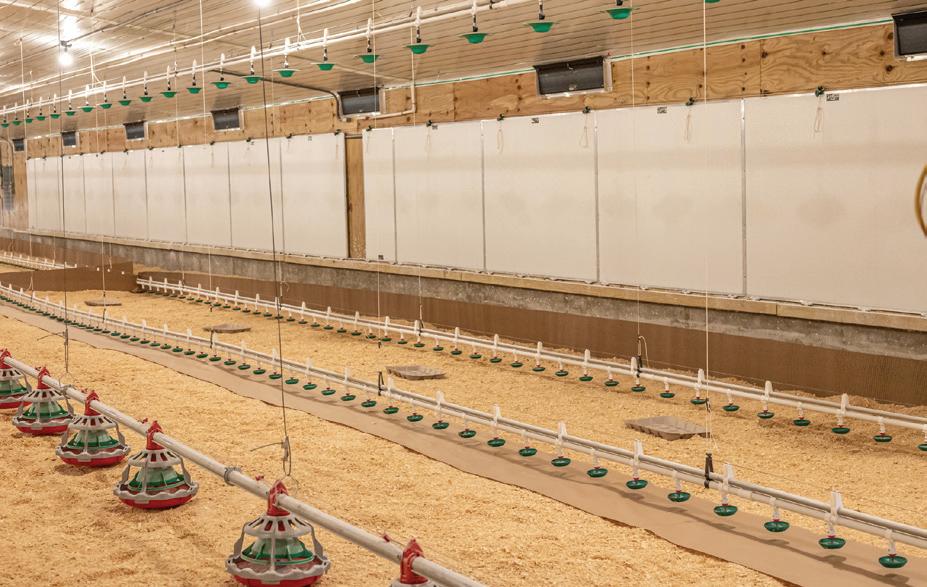

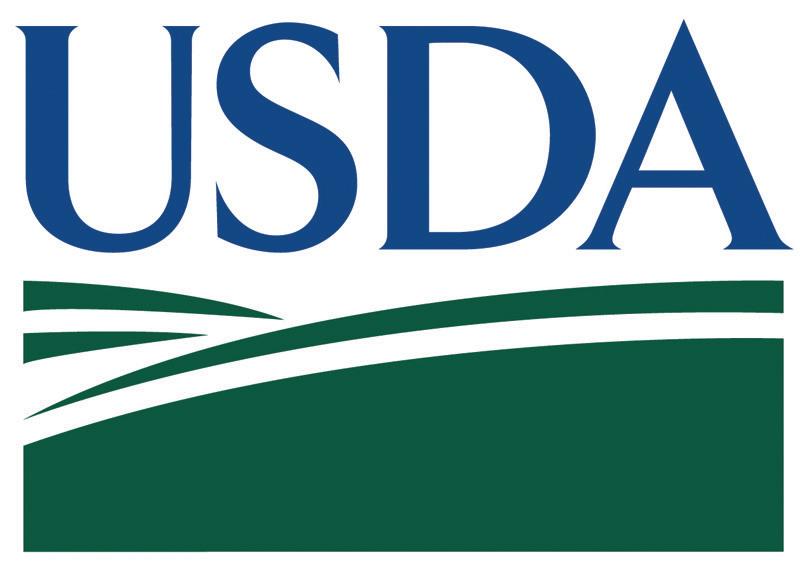
USDA secures market access for U.S. poultry exports to Colombia
WASHINGTON — The USDA and the Office of the U.S. Trade Representative have reopened the Colombian market for U.S. poultry and egg product exports, culminating several months of collaborations with the Colombian Institute of Agriculture to resolve this trade barrier.
“We’re pleased that Colombian officials are living up to the commitments outlined in the U.S.-Colombia Trade Promotion Agreement,” said USDA Under Secretary for Trade and Foreign Agricultural Affairs Alexis M. Taylor. “Holding
our trading partners accountable is critical to ensuring the benefits of trade are felt by our farmers and ranchers across the United States and in their local communities.”
“Reopening this market was of critical importance to U.S. poultry producers and to USDA,” said USDA Under Secretary for Marketing and Regulatory Programs Jenny Lester Moffitt. “Our team collaborated tirelessly with Colombian officials to demonstrate that U.S. poultry and egg products do not pose an animal health risk and can be safely imported.”
Before the market was closed in August 2023 due to concerns over highly pathogenic avian influenza in the region, Colombia was the 10th largest market for U.S. poultry, with exports reaching $105 million in 2022.
Cooper Farms processing plants get AA+ on annual audits
OAKWOOD, Ohio — Cooper
(Continued on page 18)

FAST TRACK Wall Vents
Our new Fast Track Wall Vent (U.S. Patent No. 11,33,392) takes the concept of a wall vent to the next level. It comes fully assembled right out of the box, goes up very quickly and is very competitively priced.
Wall Vent Features
Δ Available with an Aluminum or UV stabilized PVC frame
Δ Superior performance
Δ Integrated track cord tensioner/locator
Δ Integrated winter latching system

Δ Cord guide included along with installation jig to speed up installation


Δ Available in 8”,10’, 12”, 14” heights with custom lengths available
Δ Perfect for retrofit applications-the wall vent is surface mounted to compensate for framing irregularities and can be ordered to fit virtually any opening
Δ Orders come bulk-packed in palletized gaylords to make it easier and faster on installation crews
POULTRY TIMES POULTRYTIMES.COM 15
602 EAGAN ROAD, P.O. BOX 620 BLACK ROCK, AR 72415 Introducing EAGAN
Cord Guide Installation Tool (Continued from page 13)
Aluminum Framed Fast Track Wall Vent UV Stabilized PVC Framed Wall Vent



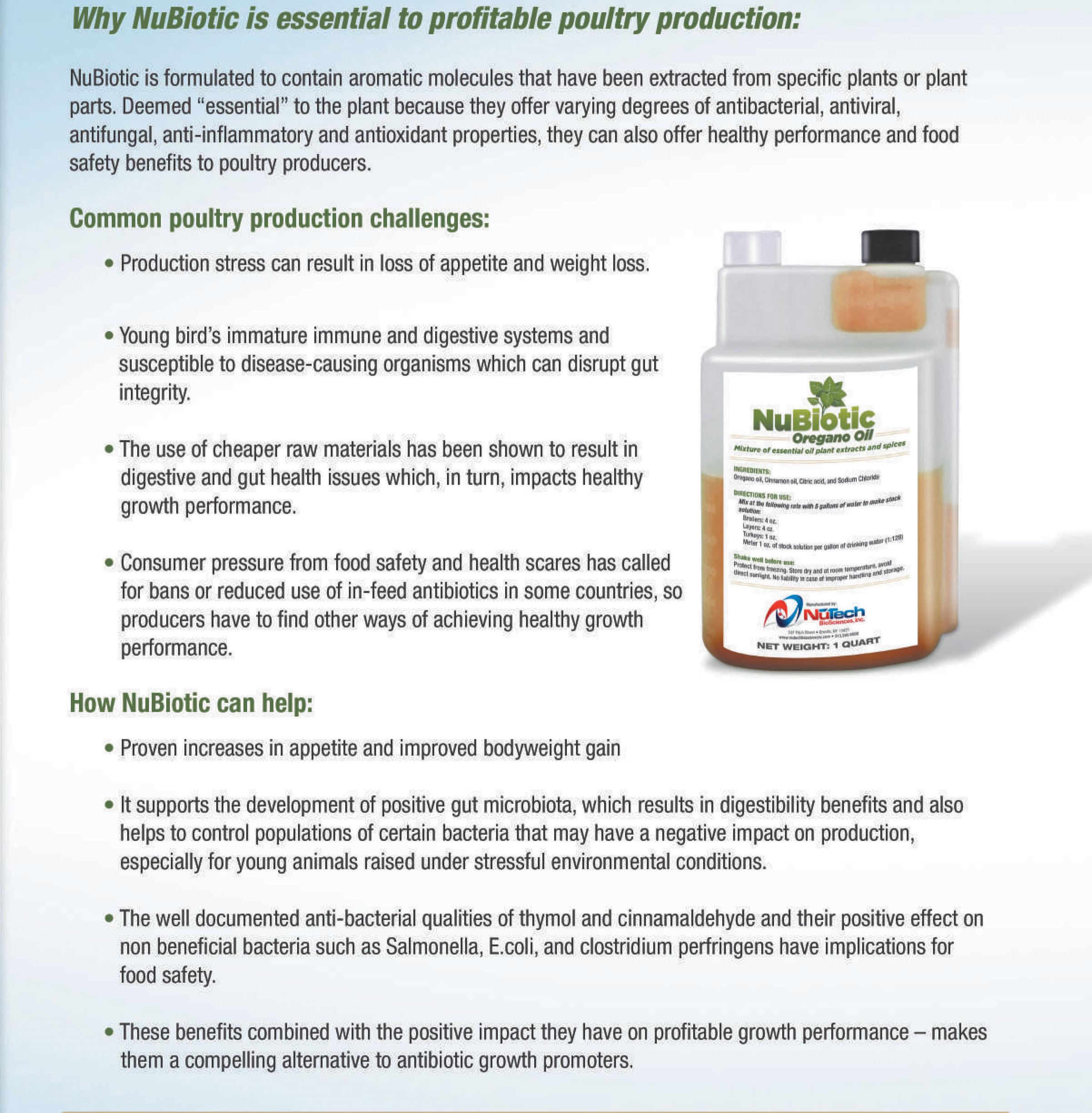





Product inquiries: info@nutechbio.com 315-251-4324 • 315-751-0729
Farms was recently awarded an AA+ rating at both of its Van Wert Cooked Meats and St. Henry Harvesting plants in a recent food safety audit from the Brand Reputation Compliance through Global Standard (BRCGS). This is the highest possible rating attainable.
Cooper Farms Director of Processing Tom Wisvari, said the company has received perfect ratings from pre-announced audits in the past, but the AA+ rating is only achievable in an unannounced audit.
“This particular audit was unannounced, so we are extremely proud to know that our team members are doing things the right way at all times,” Wisvari said. “This gives us great confidence that our products are being produced safely.”
Cooper Farms COO Gary Cooper credits the team members on the production floor, as well as the sanitation crews, for the successful audit.
“Food safety and quality is a top priority at both the harvesting and cooked meats locations,” Cooper said. “The dedicated teams we have, as well as the leadership at both locations, deserve all the credit in the world for maintaining our reputation of producing high-quality, safe products.”
From the BRCGS official website: The BRCGS Global Food Safety Standard has set the benchmark for nearly 25 years. Adopted by over 22,000 sites in more than 130 countries, the standard is accepted by 70 percent of the
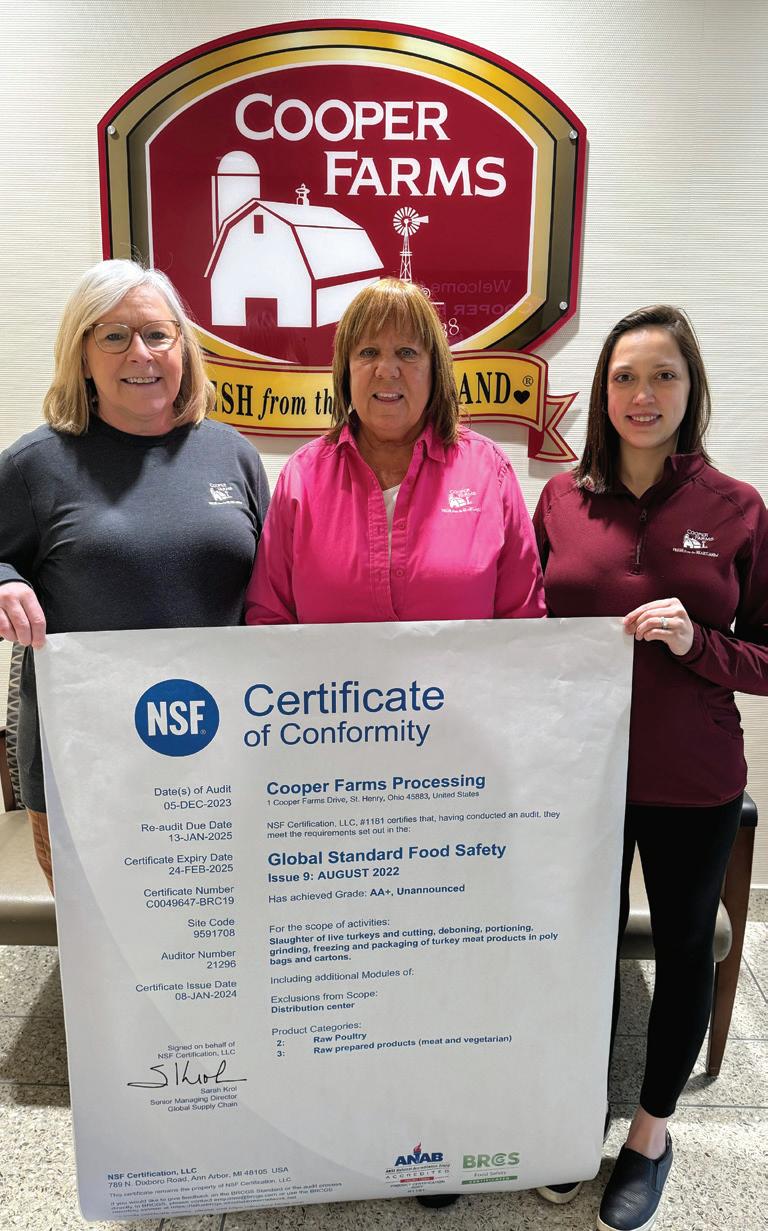
top 10 global retailers, 60 percent of the top 10 quick-service restaurants, and 50 percent of the top 25 manufacturers.
Developed with input from industry, it provides a framework to manage product safety,
integrity, legality and quality, and the operational controls for these criteria in the food and food ingredient manufacturing, processing and packing industry.
For more information about Cooper Farms, visit https://cooperfarms.com.
Animal food industry gathers at PISC for networking, education
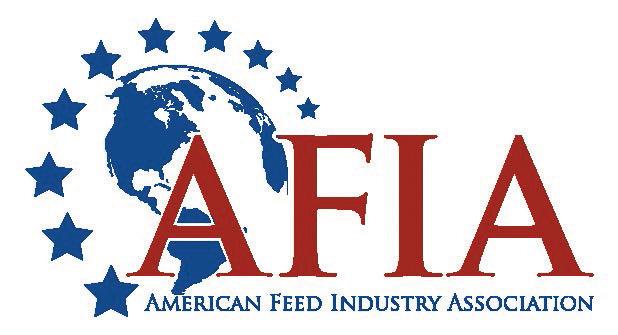
ARLINGTON, Va. — The American Feed Industry Association hosted its annual Purchasing and Ingredient Suppliers Conference (PISC) March 12-14, in San Antonio, Texas. The conference brought together nearly 600 feed ingredient buyers and sellers, including more than 100 firsttime attendees.
During the three-day conference, attendees conducted business meetings, attended educational sessions, and participated in various networking opportunities.
“With nearly 600 attendees joining us in
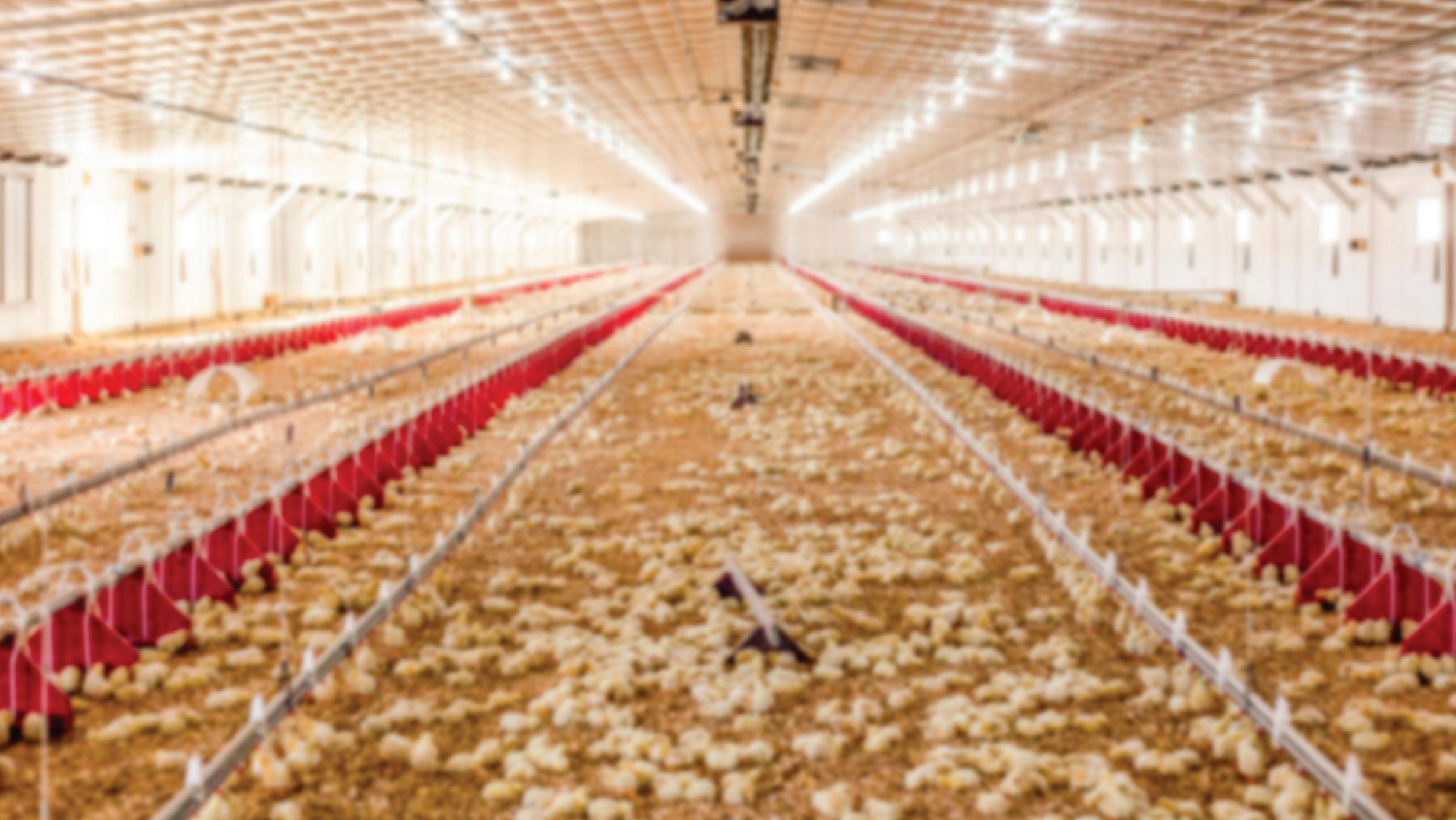
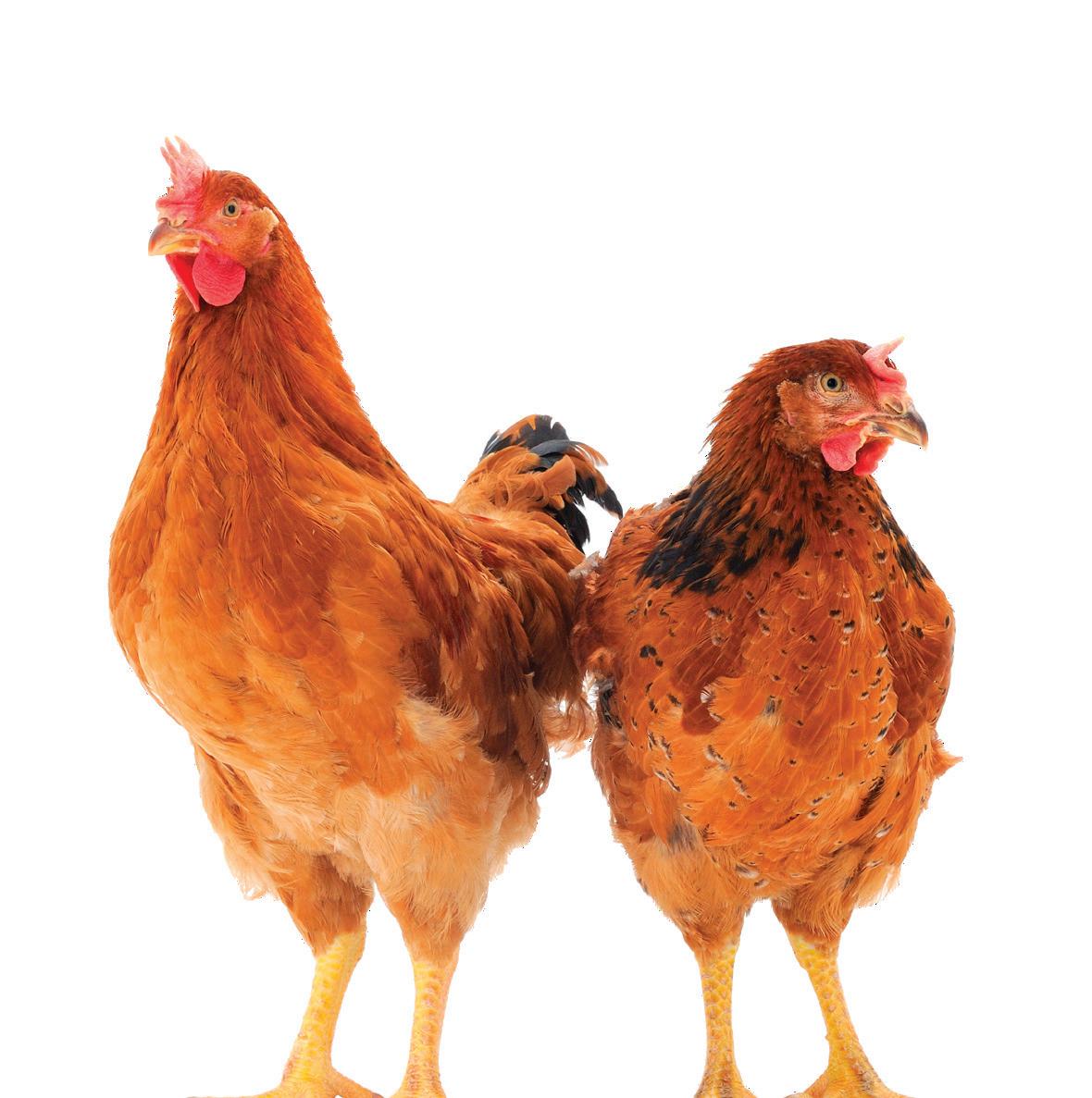






POULTRY TIMES POULTRYTIMES.COM 18
800-845-3374 FarmerBoyAg.com Is Your Flock Defended? Virocid® Foot Pan Powder Protective Footwear Tek-Trol Disposable Boot Covers Protect Your Poultry with Farmer Boy! Synergize
(Continued from page 15)
San Antonio last week for AFIA’s Purchasing and Ingredient Suppliers Conference, it is clear that PISC is where the animal food industry gets business done,” said Jessica Morse, AFIA’s director of meetings and events. “As always, face-to-face networking opportunities are a top priority at PISC. The sponsored networking lounges were a huge success. And from the mariachi band to the interactions with cuddly goats, the 2024 PISC offered a truly memorable experience.”
The educational programming brought together industry experts to discuss the impact of California’s Proposition 12 legislation and similar bills on the animal agriculture industry; consumer trends in grocery retail; logistical challenges in the supply chain; strategies for navigating human resource challenges; and a current market outlook for grain and livestock products. Beyond the educational sessions, the conference provided ample networking opportunities for attendees to connect and network with industry colleagues, including golf, goat yoga, a late-night dessert bar and several receptions and networking lounges.
Also at the conference, the AFIA and Feedstuffs named ADM’s Bluffton, Ind., plant as its 2023 Premix/ Ingredient Feed Facility of the Year.
The 2025 PISC will take place March 18-20 at the Hyatt Regency Grand Cypress in Orlando, Fla.

Case Farms announces changes to executive leadership team
TROUTMAN, N.C. — Case Foods Inc., a leading poultry company, and its Case Farms affiliated companies announce the appointments of Chuck McDaniel to president and chief operating officer, and Brian Roberts to chief commercial officer, effective immediately.
McDaniel brings extensive industry experience, having previously worked for Case Foods from 2003
(Continued on next page)


POULTRY TIMES POULTRYTIMES.COM 19
www.CargillAnimalNutrition.com/Poultry ©2024 Cargill, Incorporated. All rights reserved. Nobody knows what tomorrow will bring. But now that we’re bringing performance, health and nutrition together, we can support you for what comes next. Let us help you optimize your poultry operation today and elevate performance tomorrow. For your flock, for your operation, and for the future of our industry. THIS IS YOUR CARGILL ISN’T JUST NUTRITION. THIS PERFORMANCE, HEALTH & NUTRITION WORKING TOGETHER, SO MOST PRODUCTIVE DAYS ARE YET TO COME. ANIMAL NUTRITION
to 2012 in various roles, including vice president and general manager for the Ohio operations and director of commodity sales. McDaniel has also served in various sales management positions with Columbia Farms, Gold Kist, and Koch Foods. For the last 12 years,
he has served as vice president, account management for Agri Stats.
“Chuck has been an integral part of our growth in Ohio during his tenure of 10 years with me. We are thrilled to welcome him back to the company in this new leadership role,” said Mike Popowycz, Case Foods vice chairman and CEO.

Originally from South Carolina, McDaniel graduated from the University of South Carolina with a degree in psychology, received his master’s degree in management science from the University of Central Texas, and served in the U.S. Army for 5 years as an Apache attack helicopter pilot.
Roberts joined Case Foods in 2016 as vice president of sales and marketing. Prior to Case Foods, Roberts served in various senior sales management positions with Gold Kist, Marshall Durbin, MarJac and Tyson. In his new role, Roberts will lead the sales and marketing team, quality and food safety team, plant purchasing team, and be responsible for the company’s growth strategies.
“Brian has played a key role in improving our sales mix and customer base since 2016, and we are eager for him to oversee the strategic growth of our company,” Popowycz said.
Roberts, originally from Florida, graduated from West Point with a degree in engineering management, earned his MBA from Brenau University, and served in the U.S. Army for 5 years as an artillery captain.
Case Foods added that both McDaniel and Roberts, with their combined expertise and dedication, are set to propel Case Foods and its affiliated companies towards continued success.

IFEEDER launches
new blog
ARLINGTON, Va. — The Institute for Feed Education and Research (IFEEDER) announces the launch of its blog, IFEEDER Fodder. For nearly 15 years, IFEEDER has been at the forefront of advancing understanding and trust in sustainable feed and pet food supply chain through research and education. The IFEEDER Fodder blog will serve as a platform for industry professionals, researchers, consumers and stakeholders to engage with timely and relevant content related to feed and pet food sustainability, research and education.




“Over the past several years, IFEEDER has been leading conversations with stakeholders about the incredible work that the animal food industry is doing to be more responsive to current challenges and develop proactive business solutions that impact the future health of this unique agricultural sector,” said Lara Moody, IFEEDER’s executive director. “Now, with the launch of our new blog, we invite others to participate in these conversations too, as we aim to hear from industry leaders, university researchers and partners about some of the research, education and sustainability projects IFEEDER has underway.”
IFEEDER Fodder will cover a range of topics, including advancements in animal nutrition, innovation and collaboration efforts in sustainability, lessons from industry, updates on current research and education projects with partners and commentary on how current industry events impact the long-term business climate for the animal food sector. The blog will feature contributions from IFEEDER’s executive director, industry leaders, academic

POULTRY TIMES POULTRYTIMES.COM 20
(Continued from previous page)
partners and other stakeholders, offering diverse perspectives and valuable insights.
To access the latest blogs from IFEEDER Fodder, visit www.ifeeder.org/news/ifeeder-fodder. For more information about IFEEDER, visit www.ifeeder.org.
Meat Institute, FMI announce Leaders of Tomorrow
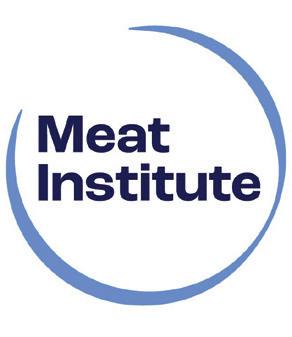
WASHINGTON — At the recent 2024 Annual Meat Conference, the Meat Institute and FMI — The Food Industry Association announced 10 winners for the 2024 Leaders of Tomorrow Program. The winners are: Kaylee Russell, Tyson Foods; Michael Yeater, Albertsons Companies; Tammy Gonzales, Cargill; Mike Van Drie, SpartanNash Co.; Nicole Koch, Seaboard Foods; Liz Holt
Welnhofer, Pre Brands; Hillary Niblock, Superior Farms; MariePier Labarre, Cascades; Zachary Stadler, Associated Wholesale Grocers; and Jennifer Hicks, Mitchell Grocery Corp.
“These 10 Leaders of Tomorrow proved themselves to be rising stars in the industry,” said Julie Anna Potts, president and CEO of the Meat Institute. “It’s exciting to think about the creativity and innovation these young leaders will bring to their respective companies and to the industry as a whole.”
“It’s inspiring to witness the leaders of tomorrow shape the future of meat category management,” said Leslie G Sarasin, president and CEO of FMI – The Food Industry Association. “We hear their stories of nurturing sustainable supply chains, fostering positive team development and contributing to their companies’ financial growth. And most importantly, their dedication to driving impactful strategies supports consumer-centric experiences that delight meat shoppers across this nation.”
The Meat Institute and FMI launched this program in 2019 for
the meat retail industry to recognize future leaders and help them grow and connect with current leaders in the industry.
Candidates are nominated by their supervisors and winners are selected by a committee of retailers and packer/processors. The winners are chosen based on the following criteria: commitment to advancing the retail meat business; track record of success; individual initiative; leadership potential; and communication skills.
The winners received complimentary registration to the Annual Meat Conference, where they experienced the comprehensive educational programming that detailed the latest developments in meat retailing and consumer trends; and were partnered with a professional industry mentor to guide them during the conference.
Elanco appoints O’Neill as general counsel and corporate secretary
GREENFIELD, Ind. — Elanco
 O’Neill
O’Neill
Animal Health has announced the appointment of Shiv O’Neill as the company’s executive vice president, general counsel and corporate secretary. O’Neill will be responsible for the global strategy and operations of the company’s legal team, ethics & compliance organization and ESG efforts.
“Shiv’s ability to deliver strategic value to Elanco in the shortterm serving as our interim general counsel combined with her robust experience made it clear that she was the right person for this role,” said Jeff Simmons, Elanco president and CEO. “Her deep understanding of Elanco’s legal operations, coupled with her broad experience in regulatory compliance, product safety and transactional matters, equips her to provide valuable leadership counsel to support the company’s strong operational integrity and
(Continued on page 23)

POULTRY TIMES POULTRYTIMES.COM 21

POULTRY TIMES POULTRYTIMES.COM 22
current and long-term growth objectives.”
O’Neill brings more than 20 years of extensive legal expertise. Most recently, O’Neill served as vice president, deputy general counsel, Americas of Elanco. In this role, O’Neill led the strategy and operations of Elanco’s commercial and regulatory legal team in the Americas and provided strategic advice and counsel to company leaders within the U.S. Farm Animal, U.S. Pet Health and International businesses. Prior to joining Elanco, O’Neill served as senior counsel at Cummins Inc. where she oversaw global litigation, product safety, crisis management, internal investigations and regulatory compliance matters.
significant positive impact in the world, while generating sustainable value within the company and our local communities.”
O’Neill received an undergraduate degree from Loyola University Chicago and a juris doctor degree from the Indiana University Maurer School of Law in Bloomington, Ind. She has served on several boards of non-profit organizations and has been committed to pro bono work throughout her career.
Tyson Ventures invites startups to apply for
of Dimmable LED Lamps that
Tyson Demo Day

sure the highest standards of quality across the company’s unique supply chain.
“Our vision for Tyson Demo Day 2024 is to become a significant catalyst of groundbreaking supply chain technology by bringing startups together to collaborate with Tyson Foods,” said John R. Tyson, Tyson Ventures president and chief financial officer. “Together, we can reimagine, innovate and elevate the protein supply chain across every touchpoint.”
for startups to showcase their supply chain solutions and potentially partner with Tyson Foods to test their innovations in real market conditions,” said Brady Stewart, Tyson group president, Beef, Pork and chief supply chain officer. “Following the event, successful startups may engage in continued conversations with Tyson Foods, paving the way for further high-impact opportunities.”
“We are at a pivotal moment in our company’s journey as we enter an exciting time of growth and new innovation, and I am pleased to play a role in shaping this next era for Elanco,” O’Neill said. “I am proud to be part of this remarkable team of leaders and legal experts. Our collective aim is to launch products that will make a
Have shortened life hours? Face greater lumen depreciation than you expected? Flickering at different lighting levels especially low light levels?
SPRINGDALE, Ark. — Tyson Ventures, the venture capital arm of Tyson Foods, announces the call for applications for the third installment of Tyson Demo Day. Tyson Demo Day 2024 aims to revolutionize the future of the Tyson Foods food supply chain by collaborating with innovative startups that foster sustainable practices, enhance transparency, create new efficiencies, and en-
Startups with innovations in logistics software, distribution, warehousing, traceability and transparency, animal welfare, cold chain management, inventory management, forecasting and predictive analytics, supplier management and sourcing technology and beyond, are encouraged to apply by the May 3, 2024, deadline.
“Tyson Demo Day 2024 presents an unparalleled opportunity
Selected participants will have the chance to pitch at Tyson Demo Day at the Tyson Foods World Headquarters in Springdale, Arkansas. Successful startups may have access to further opportunities such as mentorship from Tyson Foods executives, potential pilot and testing programs, commercial partnerships and recognition through press and media.
It’s time to look at what’s controlling Let us help you solve the problem!!!
100% PURE TRAILING
‘Trailing Edge’ Dimmer design is the only option for:
For updates and further details about Tyson Demo Day 2024, follow the Tyson Ventures LinkedIn profile. Interested startups and entrepreneurs are encouraged to apply online by May 3, 2024. For more information and to apply, visit https://www.tysonfoods. com/innovation/food-innovation/tyson-ventures.


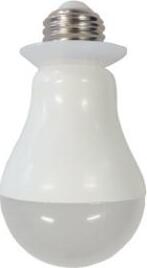

of Dimmable LED Lamps that
Have shortened life hours?
It’s time to look at what’s controlling your light bulbs. Silicone Protection
Gasket








100% PURE TRAILING EDGE

Face greater lumen depreciation than you expected?
Have shortened life hours?
Face greater lumen depreciation than you expected?
Flickering at different lighting levels especially low light levels?
Flickering at different lighting levels especially low light levels?

6/10/15W Directional Dim/ Non-Dim
- Directional Beam Angled LED's - designed with the exact beam angle to offer even FC lighting on the floor based on poultry house spacings/specs.


- Directional Beam Angled LED'sexact beam angle to offer even FC lighting on the floor based on poultry house spacings/specs.


Non Dim
*Available with Junction
*Energy Star Approved


- Directional beam angle lamps offer 100% dimming while Omni lamps typically wont dim below 25%.

- Directional beam angle lamps offer 100% dimming while Omni lamps typically wont dim below 25%.
- Directional Beam Angled LED's - designed with the exact beam angle to offer even FC lighting on the floor based on poultry house spacings/specs.
www.aglights.com/800-657-0509
www.aglights.com/800-657-0509
- Directional beam angle lamps offer 100% dimming while Omni lamps typically wont dim below 25%.


10/16/25W Dimm models
*Energy Star Approved for rebates
of Dimmable LED Lamps that

*Energy Star Approved for rebates
*IP66 Wet located
*Constant Current with minimal lumen
*CONSTANT ARE A FEATURE COMPETITORS
*Constant Current Driver delivers full current/wattage with minimal lumen loss at low voltages.
*Constant Current Driver delivers full current/wattage with minimal lumen loss at low voltages. CONSTANT CURRENT DRIVERS ARE A FEATURE THAT OVERDRIVE COMPETITORS DO NOT OFFER!
*CONSTANT CURRENT DRIVERS ARE A FEATURE THAT OVERDRIVE COMPETITORS DO NOT OFFER!
Have shortened life hours? Face greater lumen depreciation than you expected?
POULTRY TIMES POULTRYTIMES.COM 23
100% PURE TRAILING EDGE It’s time to look at what’s controlling your light bulbs. Silicone Protection Gasket
14/26W Non Dim models 10/16/25W Dimm models of Dimmable LED Lamp that TIRED Poultry Dimmer www.aglights.com/800-657-0509
LED by Innovation
6/10/15W Directional Dim/
LED by Innovation
TIRED Poultry Dimmer
LED by Innovation
Silicone Protection Gasket 6/10/15W Directional
Non-Dim
10/16/25W
BEST LED control Full LED Life Low Level Dim Opstion
Dim/
14/26W
Dimm
TIRED The ONE & ONLY Poultry
100% PURE TRAILING EDGE ‘Trailing Edge’ Dimmer design is the only option for: It’s time to look at what’s controlling your light bulbs. Let us help you solve the problem!!! BEST LED control Full LED Life Low Level Dim Opstion Silicone Protection Gasket
Directional Dim/ Non-Dim 14/26W Non Dim models 10/16/25W Dimm models AskusaboutourNEWFeederlights The ONE & ONLY Poultry Dimmer www.aglights.com/800-657-0509 *Available with Junction Boxes. *Energy Star Approved for rebates *IP66 Wet located rated *Constant Current Driver delivers full current/wattage with minimal lumen loss at low voltages. *CONSTANT CURRENT DRIVERS ARE A FEATURE THAT OVERDRIVE COMPETITORS DO NOT OFFER! - Directional Beam Angled LED's - designed with the exact beam angle to offer even FC lighting on the floor based on poultry house spacings/specs. - Directional beam angle lamps offer 100% dimming while Omni lamps typically wont dim below 25%. LED by Innovation
TIRED
6/10/15W
(Continued from page 21)
National Turkey Federation names Leslee Oden new president and CEO
DAVID B. STRICKLAND Poultry Times Editor dstrickland@ poultrytimes.com
WASHINGTON — Leslee Oden, senior vice president of legislative affairs with the National Turkey Federation, and a 15-year NTF staff member, has been named to be the new president and CEO of the group. She will succeed Joel Brandenberger in July. Brandenberger has led the organization for the previous 17 years, and announced his retirement plans last fall after 33 years of service to NTF.
“On behalf of the NTF Executive Committee, Board of Directors and membership, we are excited for a new chapter at NTF with Leslee at the helm,” NTF Chairman John Zimmerman, P&J Products Co., said in a statement. “We conducted a thorough search, and it was abundantly clear that Leslee was the candi-

date with the in-depth knowledge needed to help navigate our industry through the intricate and challenging issues the turkey industry is up against.
“Her tenure at NTF brings a wealth of knowledge, steadfast dedication, key industry relationships and a deep understanding of legislative and regulatory priori-
ties that will continue to lead the turkey industry into the future.”
Oden, after assuming this new role on July 1, will oversee the federation’s day-to-day operations, as well as providing authoritative guidance for the group’s initiatives.
She began with NTF in 2009 as an intern and has since held vari-
ous positions with the federation as legislative affairs manager, director of legislative affairs and to her current role of senior vice president of legislative affairs, since 2018. NTF adds that Oden has been part of countless regulatory victories through her advocacy, as well as facilitated more than a dozen National Thanksgiving Turkey presentations at the White House and created the federation’s successful Turkey Smoke marketing program.
Oden, a native of Leona, Texas, earned poultry science bachelor’s and master’s degrees from Texas A&M University.
“I am thrilled to lead NTF into the future and am incredibly grateful for the guidance and support that our Executive Committee, the Board of Directors, Joel, current and former NTF staff, and all of our members have shown me throughout the years,” Oden said in a statement. “I am eager to start this new chapter for NTF and will continue to be dedicated in carving a path forward for our industry and represent our members in the best way possible.”
Whether it be windrowing to produce a pathogen & insect reduced bedding to grow a top performing flock of soft fluffy bedding without the need to decake or add shavings, the equipment to fit your operation options to fit your needs. Keep in mind, our goal is customer service, quality equipment and of course the BIRDS.

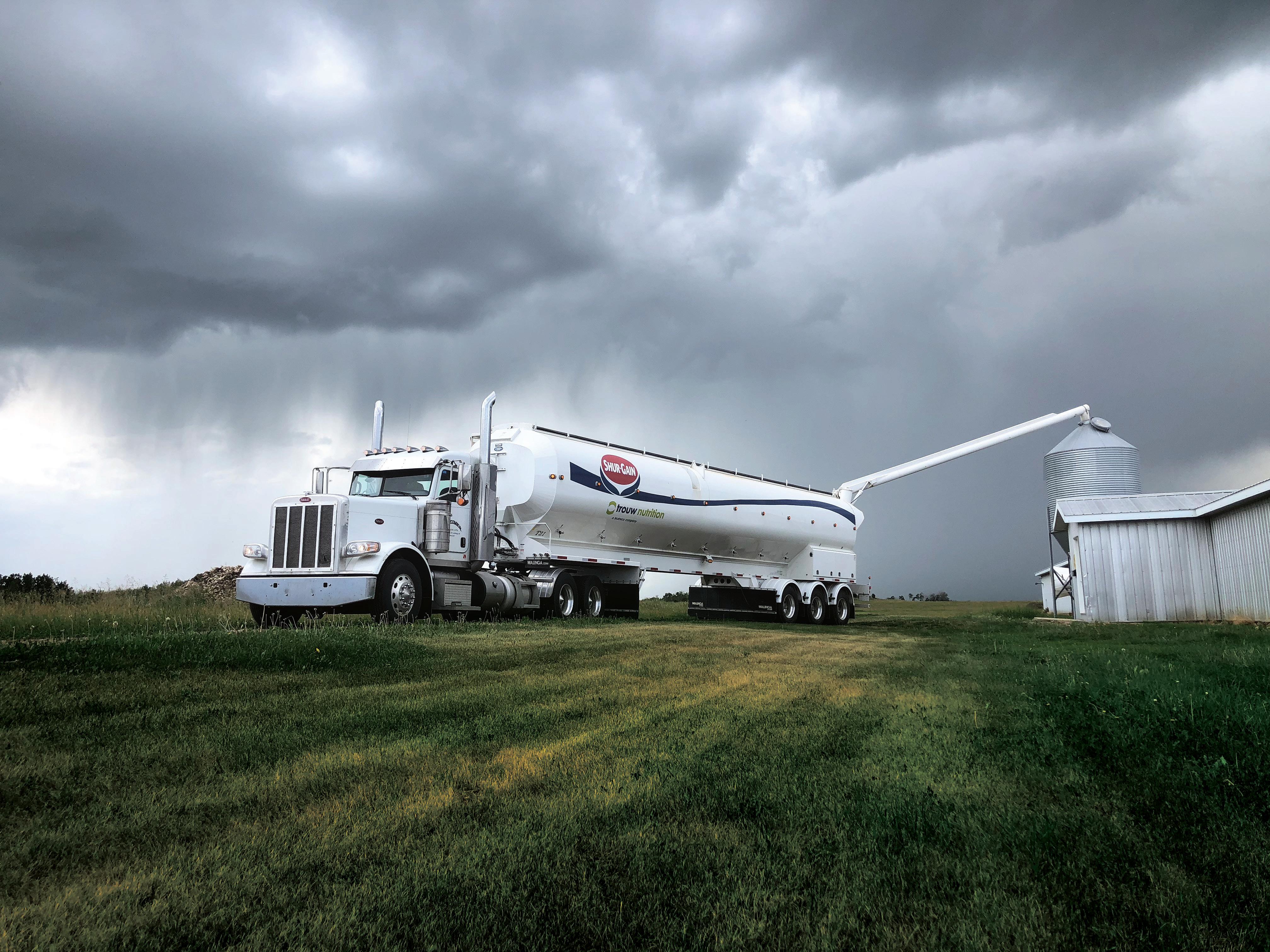




POULTRY TIMES POULTRYTIMES.COM 24
ATTENTION POULTRMANUFACTURE OF: WINDROWING/COMPOSTING & PULVERIZING EQUIPMENT For More Information: 717-445-4922 · CVLITTERPRO@GMAIL.COM Brand new flock Same old litte 800-448-4723 | info@ImpactPoultry ImpactPoultryProducts.c Reduce disease exposu Lower ammonia Improve litt IMPACT-P(NA) Not with litte
PT



federation manager, and affairs,moreat the Turkey Texas, bachelor’s Texas intoJoel, and shown Oden eager NTF dedicated our -
Auburn researcher aims to help prevent, control avian influenza
BY RACHEL DAMIANI Auburn University
AUBURN, Ala. — Since 2022, avian flu — a rapidly circulating Influenza Type A virus — has affected more than 81 million poultry, as well as the industries that depend on them. In Alabama alone, poultry generates more than 80,000 jobs and $15 billion in revenue.
In the past two years, a diseasecausing strain of avian flu, known as H5N1, has impacted 1,046 flocks across the United States. Miria Criado, an assistant professor in Auburn’s College of Veterinary Medicine, is tackling this timely topic by investigating how these influenza viruses evolve and examining approaches to reducing their deadly impact on poultry.
“This work is focused on understanding how avian influenza
circulates between species, how the virus evolves to continue circulating and how the bird’s immune system responds to the virus,” Criado said. “We are especially interested in how we can use some currently available tools or vaccines to help control these outbreaks.”
To advance this avian flu research, Criado received a grant from the USDA U.S. National Poultry Research Center for approximately $644,000 per year. This non-assistance cooperative agreement, which is a renewable grant for up to four years and $2.5 million, is a collaboration between the USDA and Auburn University. Criado, the lead principal investigator, is collaborating with Auburn Assistant Professor Constantinos Kyriakis, Erica Spackman, acting research lead within the USDA’s Exotic & Emerging Avian Viral Diseases


Bench Scales
Research and David Suarez, acting USDA laboratory director.
• The basics of bird flu
Poultry are susceptible to two different kinds of avian flu: lowpathogenicity (LPAI) and highpathogenicity (HPAI). LPAI can cause a variety of mild symptoms or none at all, said Criado. In contrast, HPAI strains typically lead to the death of the birds within two days.
In all of Criado’s research at Auburn, she is working with LPAI.
“There’s so many questions that we can answer using LPAI strains,” she said. “It’s a great opportunity to study avian flu in a very safe way.”
Criado’s research will allow her to better understand how LPAI strains are circulating among poultry and provide insights for future studies involving HPAI: a key goal given that HPAI is spreading rapidly.

“Two years ago, we only had around 40 HPAIV outbreaks reported,” Criado said. “In the last few years, we have had thousands of outbreaks. Almost all continents around the world had detections.”
This high transmission of HPAI can quickly decimate a flock, and several biosecurity measures and quarantine need to be in place for the affected poultry premise.
“One of the reasons this new strain is concerning is because the amount of virus you need to infect a bird is really, really low compared to previous strains that were circulating,” Criado said.
The virus has a surprisingly simple structure for its detrimental impacts. Criado said a virus is genetic material surrounded by a protein coat and an additional layer with surface proteins.
“If you think about a virus as a ball, then imagine there are all of


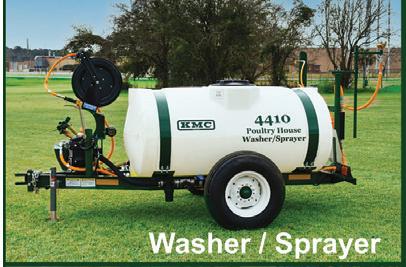
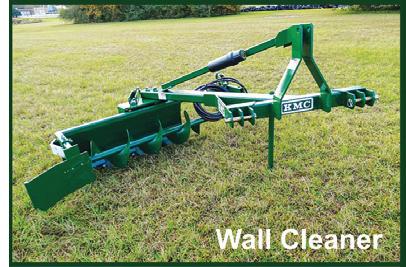



POULTRY TIMES POULTRYTIMES.COM 26 1-800-457-3720 www.weightechinc.com
The WeighTech line of bench scales offers processors the best of both worlds: functionality and durability. Our bench scales feature our industry leading MicroWeigh indicator, and is available in many sizes to fit your processing needs. In today’s fast paced processing world, efficient, reliable and rugged scale systems and equipment are crucial. 1649 Country Elite Drive, Waldron, AR 72958 Phone: 479-637-4182 Fax: 479-637-4183 The patented industry leading electronic indicator for harsh washdown environments 7300 Poultry House Blower Call us today to set up a free demo near you.
these surface proteins attached to the outside of the ball,” she said. “You may have one influenza virus strain with a square green protein or a rounded red one.”
These surface proteins seek to bind to a bird’s cells. Once the protein latches onto the cell, the virus releases its genetic material into the cell and hijacks its normal operations. The virus’ genetic material — RNA in the case of bird flu — becomes the cell’s instruction guide, causing it to produce more of the virus.
The bird’s body may respond by producing certain proteins, known as antibodies, which adopt different tactics depending on the situation. For example, an antibody may block one of the virus’s surface proteins from latching to the bird’s cell.
But this tactic may only ward the virus off for so long; viruses are adept at adapting.
“This virus mutates a lot, especially in these surface proteins,” Criado said. “When this evolution happens, it can be difficult for the antibody to defend the bird from the virus.”
• Bridging basic, applied science at Auburn
Criado is churning out basic science insights in the laboratory that can lead to improved approaches for reducing the impact of avian flu. She is studying poultry cells in a flask to better understand how the virus evolves and interacts with poultry immune cells, known as host cells.
“You can look at the genome of the virus and compare it to old or current strains to try to figure out if there is evolution,” she said. “We are especially interested in understanding how the surface proteins may change and interact with the host.”
For example, perhaps a certain segment of the virus’ genetic information is more susceptible to mutations. If Criado can pinpoint this segment of genetic material and determine what it encodes, she would be armed with more insight when developing applied solutions.
“Our work could help explain a pattern where a specific protein tends to evolve,” she said. “Maybe we can use a vaccine later to target that surface protein that can be more effective than what we’ve been using nowadays.”
Moving forward, Criado plans

to conduct poultry studies using LPAI virus and vaccines through extensively vetted protocols. Through this work, she aims to develop recommendations that can help curb the deadly impact and spread of avian flu, as well as provide insights about counter measures that can be implemented at facilities and farms to help control the spread of avian flu.
As Criado conducts her grantfunded research, she is leveraging her extensive expertise. She has previously investigated how LPAI and HPAI viruses replicate and transmit in different avian species. She also has studied vaccines for avian flu, including a recent peer-reviewed publication where she and her coauthors found that multivalent vaccines could protect chickens against avian flu and other important viral infections that affect poultry.
Across her basic and applied work, Criado’s multi-pronged research has the potential to positively impact poultry, humans and the environment. While avian flu is rare in humans, Criado hopes her research can help the scientific community be ahead of the curve if the disease were to become widespread beyond birds.
“My work is rooted in the OneHealth concept that the health of people is closely connected
to the health of animals and our shared environment,” Criado said. “Long-term, we hope our research leads to practical tools,
recommendations and intervention strategies to reduce avian flu’s impact, especially in poultry.”

POULTRY TIMES POULTRYTIMES.COM 27
Molly Bartels/Auburn University
Miria Criado, Auburn University assistant professor in the College of Veterinary Medicine, prepares materials to perform research.




Alternative Design Manufacturing & Supply Inc., located in Siloam Springs, Arkansas, is determined to meet your custom needs for quality poultry housing solutions. At Alternative Design, we are focused on working with each customer to meet their various needs. Our guiding principle was established from the beginning by brothers Eddie and Bob Loyd, who founded the company in 1987, based on a need for poultry caging on the family farm. Their needs were for a quality caging “Alternative” with the “Design” that they as the end user wanted.
Carrying on this tradition, second-generation owner Grant Loyd continues to focus on providing customers with the proven products they are searching for and require. Over the years the company has evolved to not only meet caging needs but provide high-quality isolation housing products, brooding units, trap nest boxes, transport carts, and material handling products. Grant, along with the entire team at Alternative Design, focuses on collaborating with the customer on different design ideas with the patience to learn what the customer’s goals are. However, Alternative Design does not stop at providing these products, it is important to build and maintain relationships with customers before, during, and after their purchase. Our relationships are based on trust and the ability to listen to the customer and are the cornerstone of our business.
With over 35 years’ experience, Alternative Design’s sales team is always available and willing to discuss the needs our prospective and current customers have for poultry housing products. The highly skilled engineering team is continuously focused on designing products with durability and functionality in mind to help clients achieve the results they need. Our trained service and installation teams are dedicated to meeting the customer’s needs and are willing to visit with a customer about any of our products. Whether the needs are production based or researchoriented, the quality of Alternative Design’s products is evident in the longevity and durability of their products, with many products still in use some 35 or more years later.



TAMU: Egg prices increase ahead of Easter
BY SUSAN HIMES Texas A&M University
COLLEGE STATION, Texas
Egg prices were on the rise as Easter approached, according to a Texas A&M AgriLife Extension Service expert, but they are lower than what consumers may have paid at the grocery store earlier in the year.
Consumers — and the Easter bunny — may have noticed the price of eggs increasing recently but that has mostly to do with demand, said Dr. David Anderson, Texas A&M AgriLife Extension economist, Bryan-College Station. Anderson said he expects that trend to continue leading up to the Easter holiday.
“We’re actually producing more eggs than we did a year ago, but eggs have a seasonal pattern to them,” he said, “And with Easter being earlier than usual this year, we’re also seeing prices rise earlier than we typically would.”
Producers saw wholesale prices for cartons of shell eggs strengthening recently with the increasing demand.

Holidays tend to drive demand up as consumers purchase more eggs than usual for eating and baking. The Easter holiday demand also includes the purchase of eggs to dye and hide.
• Egg prices rising but lower than previous month
According to the U.S. Bureau of Labor, in February the Consumer Price Index for eggs increased 5.8 percent, which was 17 percent below the level of 2023, with an average price of $3 per dozen. This price was 47 cents per dozen higher than in January.
Egg prices peaked in February at $3.29 per dozen according to some weekly USDA Agricultura; Marketing Service retail grocery store data, Anderson said.
Last year around the Easter holiday, the USDA reported retail eggs nationally were $2.74 per dozen. Anderson said consumers can expect them to be around $2.99 per


dozen this year.
Anderson expects the cost of a dozen eggs will decline around Texas after the holiday, which is typical, however stores may drop prices closer to Easter if demand isn’t as strong as expected.
“But I don’t think I’d wait until right before Easter to buy your eggs, just in case the demand is stronger than expected,” he said. “You probably don’t want to wait too long to get eggs, especially if you’re planning on using real ones for your Easter egg hunt.”
• Ongoing effect of avian influenza
Avian influenza, which has devastated commercial and backyard flocks in the U.S. since the out-

www.eggcartonstore.com
break began in January 2022, has been on the decline so far this year. Only one flock in the state has been infected to date, and that was a backyard flock in the Texas Panhandle, said Dr. Greg Archer, Texas A&M AgriLife Extension poultry specialist and associate professor in the Texas A&M Department of Poultry Science, Bryan-College Station.
“Since December there have been around 14 million birds lost to avian flu, with the majority being in the upper Midwest,” Archer said, adding that, while that number may be alarming, the majority — around 11 million — were impacted in December and last
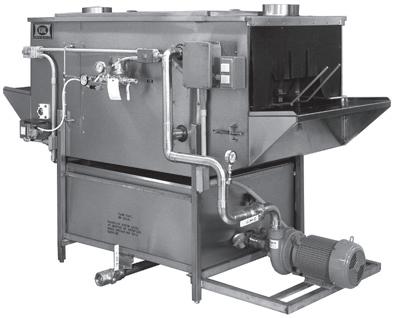

month only about 300,000 birds were lost.
Since the start of the outbreak in 2022, more than 82 million birds have been affected. As producers have been able to replace the egglaying hens lost, consumers have seen that reflected in lower egg prices.
“Knock on wood we’ll continue to see those fatality numbers drop,” he said. “Since it hasn’t been as bad this year, I wouldn’t expect egg prices to be as affected by that as much as in past years.”
Susan Himes is a writer and media relations specialist for Texas A&M AgriLife.

POULTRY TIMES POULTRYTIMES.COM 29 KUHL CORP. FLEMINGTON, NJ 08822 – USA www.kuhlcorp.com hyk@kuhlcorp.com HATCHING EGG WASHERS HATCHER TRAY WASHERS COUNTERS SEPARATORS UNSTACKERS REDUCES BACTERIA COUNT TO NEAR ZERO FLY PROBLEMS? Got Manure? We have the cure! Entomologist on Staff. Free Phone Consultation. www.kunafin.com 1-800-832-1113
PRICES: On cartons, labels, flats, trays, nests, marketing items, poultry supplies & more! 866.333.1132
WHOLESALE
Michael Miller/Texas A&M AgriLife Egg prices are up which is typical for the period prior to the Easter holiday, but still lower than what consumers paid in February.
MARKETS
Compiled by David B. Strickland, Editor 770-718-3442
dstrickland@poultrytimes.com
N
ational Egg Market:
(Mar. 25): New York eggs were unchanged for all sizes. California and regional prices were 16 cents higher for Jumbo, up 10.5 to 23 cents for Extra Large, 10 to 23 cents higher for Large, up 10 to 27 cents for Medium, and 10 cents higher for Small. The undertone is fully steady to firm. Retail demand was moderate to good, while foodservice demand ranges light to instances fairly good. Offerings were light to at times moderate. Supplies were light to moderate. Market activity was moderate to active. Breaking stock supplies were light to moderate; breaking schedules were full-time to reduced. Light type fowl supplies were moderate for the mostly light demand, the USDA Agricultural Marketing Service reports.
Shell egg demand indicator: (Mar. 20) Shell egg demand was about unchanged from the last cycle but remains average in the near-term as the Easter demand season gets underway. Negotiated prices on the loose egg market were higher on light to moderate offerings and mixed supplies. Interest was mostly moderate and trading was moderate to instances active. Wholesale breaking stock prices were higher on mostly light demand. Offerings were light and supplies were light to moderate. Schedules remain full to reduced and with moderate trading. The preliminary survey of retail outlets indicates increased activity as the Easter marketing period arrived. The average ad price declines on the increased ad activity.
National Broiler/Fryer Slaughter:
Broiler: Estimated slaughter for week ending Mar. 23 was 154,802,000. Actual slaughter for the week ending Mar. 16 was 153,988,000.
Heavy-type hen: Estimated slaughter for the week ending Mar. 23 was 1,597,000.
Actual slaughter for the week ending Mar. 16 was 1,690,000.
Light-type hen: Estimated slaughter for the week ending Mar. 23 was 651,000. Actual slaughter for the week ending Mar. 16 was 693,000.
Total: Mar. 23: 157,050,000; Mar. 16: 156,371,000.The estimated number of broiler/fryers available for the week of Mar. 30 is 166 million.
Grain Prices
Broiler/Fryer Report
Egg Markets
Turkey Markets
Broiler Eggs Set/Chicks Placed in 19 States

POULTRY TIMES POULTRYTIMES.COM 30 Page 30 | Poultry Times
USDA quotations New York cartoned del. store-door: Mar. 11 Mar. 25 Extra large, up 27¢ $2.26--$2.30 $2.53--$2.57 Large, up 27¢ $2.24--$2.28 $2.51--$2.55 Medium, up 43¢ $1.97--$2.01 $2.40--$2.44 Southeast Regional del. warehouse: Mar. 11 Mar. 25 Extra large, up 12½¢ $2.27½--$2.37 $2.40--$2.60 Large, up 11½¢ $2.24½--$2.32 $2.36--$2.57 Medium, up 34½¢ $1.88½--$1.96 $2.23--$2.46
Weighted avg. prices for frozen whole young turkeys Weighted average (cents/lb.) F.O.B. shipper dock National Week ending Mar. 22 (range) (weighted avg.) Hens (8-16 lbs.) 103-103 103.00 Toms (16-24 lbs.) 91-105 95.33 Week ending Mar. 15 (weighted avg.) (Change) Hens (8-16 lbs.) 94.26 8.74 Toms (16-24 lbs.) 104.00 -8.76
USDA National Composite Weighted Average For week of: Mar. 22 $1.31.16 For week of: Mar. 15 $1.28.31 Majority (whole body) Mar. 22 Eastern Region: 97¢--$1.53 New York: $1.15--$1.46 Central Region: $1.13--$1.49 Chicago: $1.15--$1.29 Western Region: $1.10--$1.55 Los Angeles: $1.15--$1.50 Negotiated prices in trucklot and less-than-trucklot quantities of ready-to-cook whole body broiler/fryers delivere d to first receivers; prices in cents per pound
OHIO COUNTRY ELEV. Feb. 13 Mar. 11 Mar. 25 No. 2 Yellow Corn/bu. $3.95 $4.01 $3.97 Soybeans/bu. $11.66 $11.54 $11.74 (Courtesy: Central Ohio Farmers Co-op, Marion, Ohio)
EGGS SET (Thousands) CHICKS PLACED (Thousands) Ala Ark Ca,Tn,Wv Del Fla Ga Ky La Md Miss Mo. N.C. Okla Pa S.C. Tex Va Other states U.S. Total Feb.17 35,122 24,990 13,592 5,618 1,225 36,228 7,138 3,503 8,066 17,412 8,535 25,074 5,698 7,822 6,252 19,352 5,667 12,036 243,330 Feb. 24 35,133 25,655 13,615 5,538 1,225 36,156 8,133 3,471 8,061 17,469 8,798 25,346 5,426 7,659 6,088 19,312 5,667 11,859 244,611 Mar. 2 35,260 25,193 13,623 5,620 1,225 36,001 7,732 3,533 8,050 17,469 8,833 24,723 5,338 7,900 6,082 19,311 5,664 11,863 243,409 Mar. 9 34,318 25,096 13,894 5,574 1,225 36,237 8,062 3,548 8,063 17,296 8,705 24,937 5,125 7,935 5,970 19,376 5,664 11,909 242,934 Mar. 16 35,124 24,774 13,737 5,583 1,225 36,378 8,088 3,563 8,062 17,396 8,798 24,712 4,891 7,803 6,332 19,376 5,667 12,282 243,791 Feb. 17 24,080 20,455 11,355 5,226 1,105 27,940 5,342 2,979 6,152 13,431 5,236 19,516 3,773 5,062 4,475 14,928 4,939 9,077 185,071 Feb. 24 24,471 19,927 12,280 4,632 1,317 28,018 5,376 2,930 5,874 13,369 5,491 19,794 4,329 4,569 4,586 14,660 5,288 8,874 185,785 Mar. 2 24,659 20,713 12,819 5,539 1,243 26,914 5,352 2,888 6,389 13,462 5,476 20,367 3,883 4,998 4,268 14,489 4,665 8,898 187,022 Mar. 9 25,458 21,554 12,339 4,574 1,330 26,697 5,600 2,836 6,558 13,781 5,425 19,729 3,170 4,965 5,399 14,520 5,128 9,144 188,207 Mar. 16 24,221 21,267 12,527 4,550 1,414 28,036 5,943 2,820 6,797 13,638 5,522 19,349 3,101 4,791 5,015 14,591 5,139 9,028 187,749 1/Current week as percent of same week last year.













































































 O’Neill
O’Neill





































